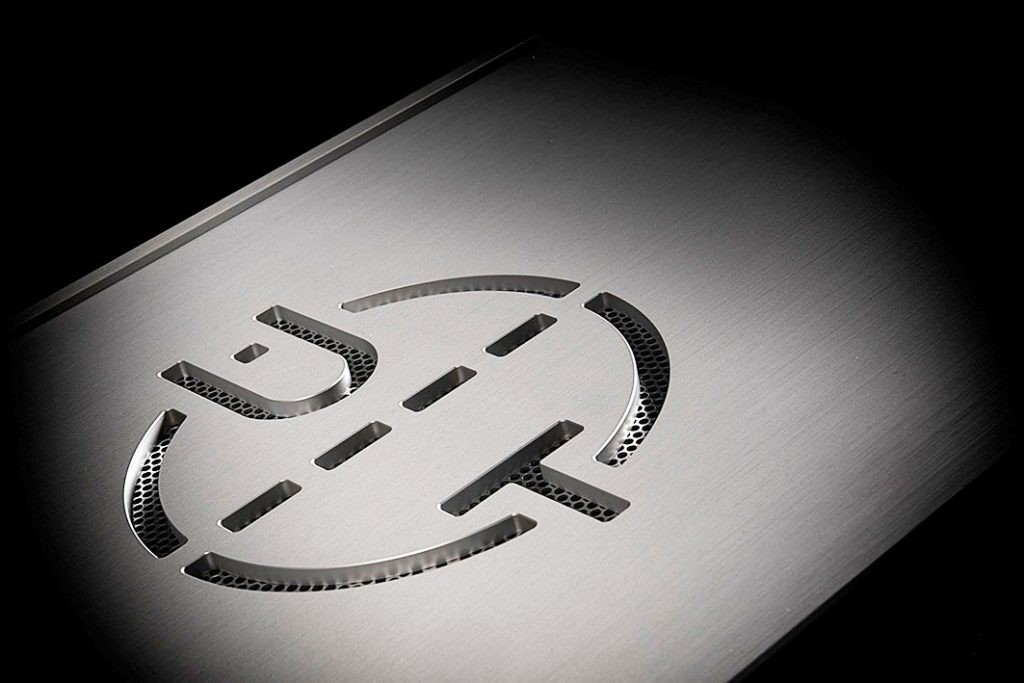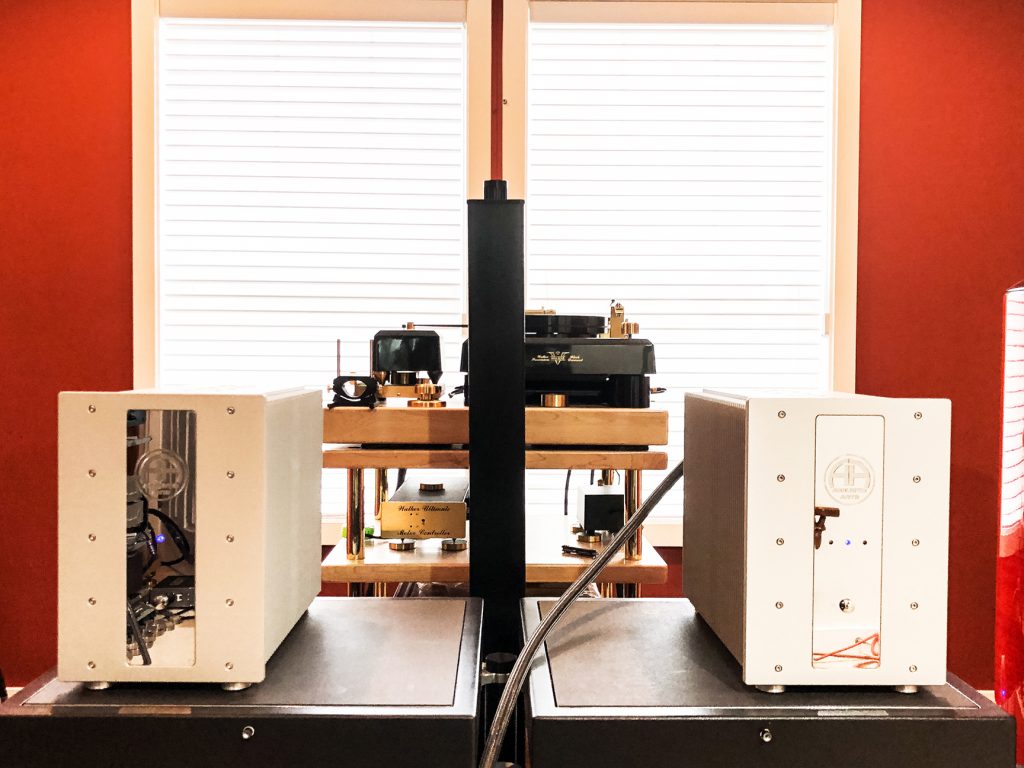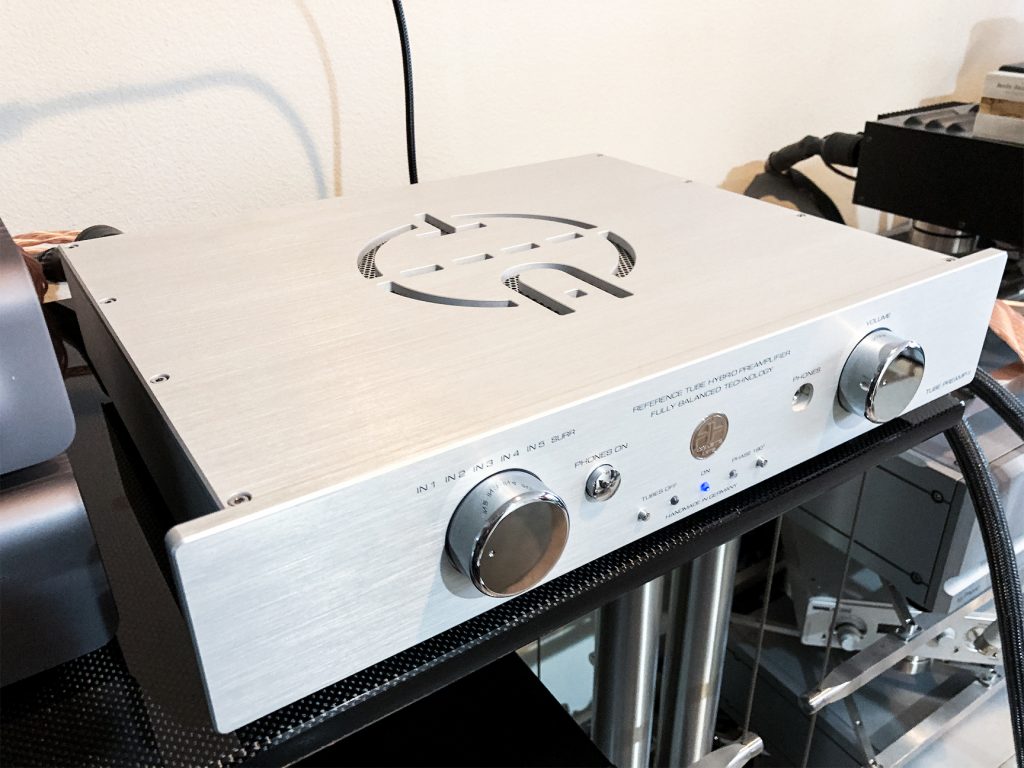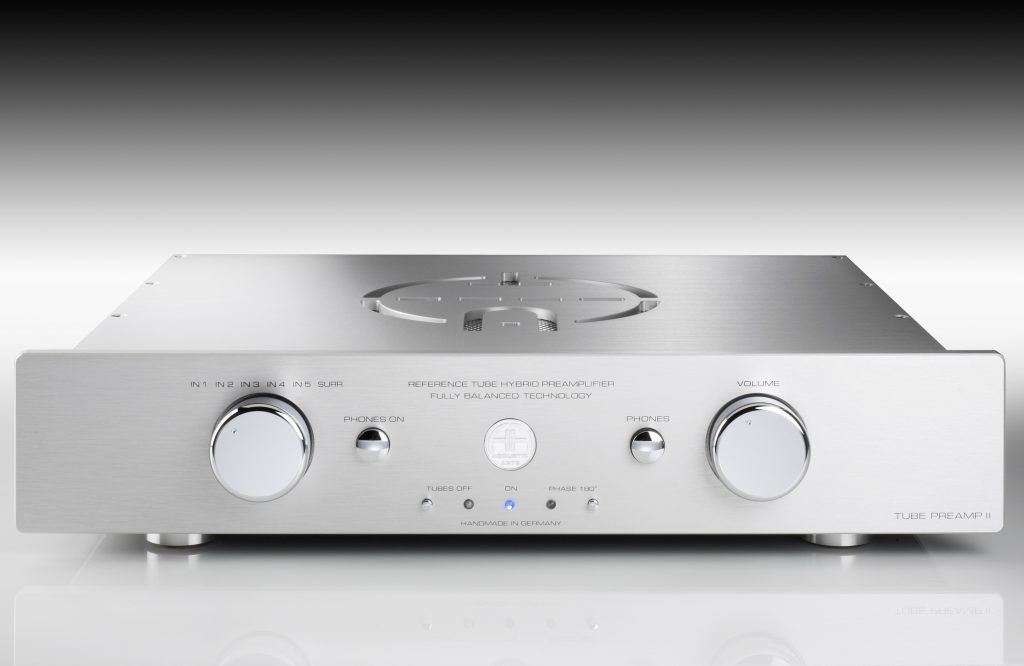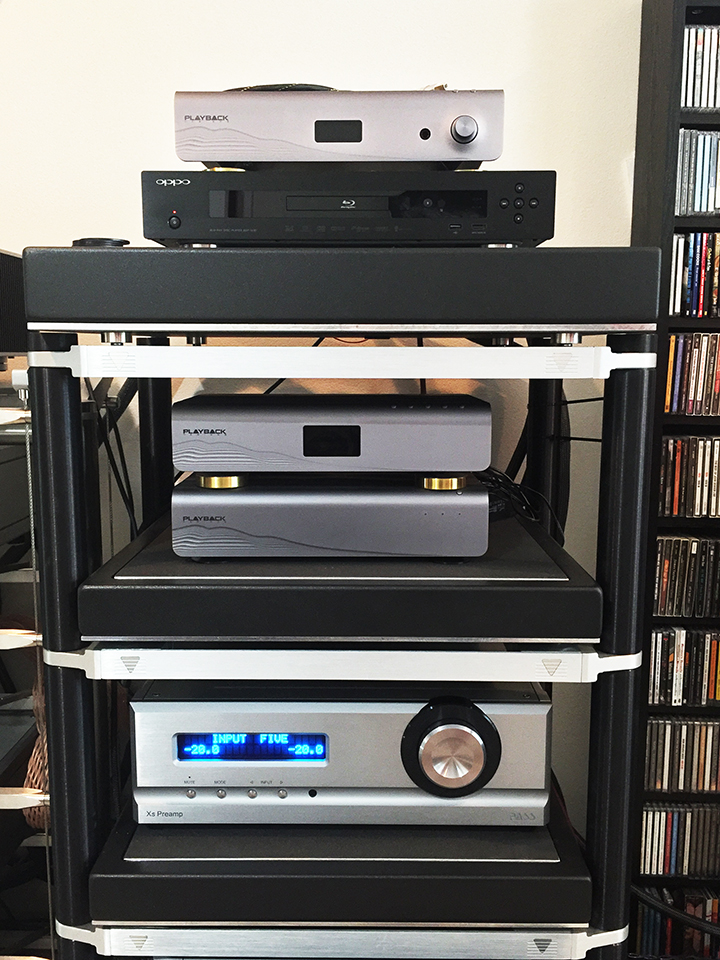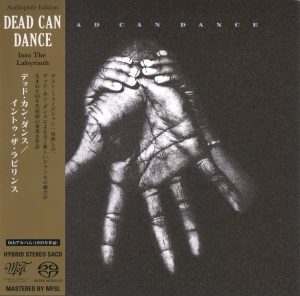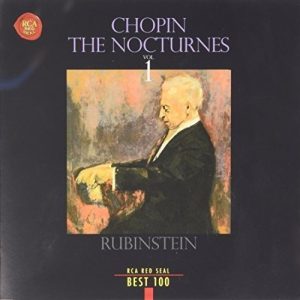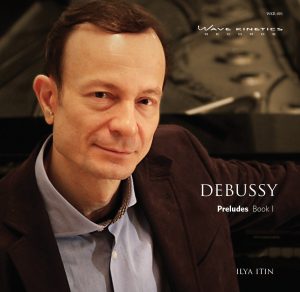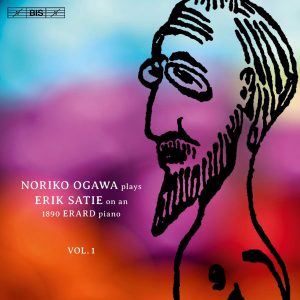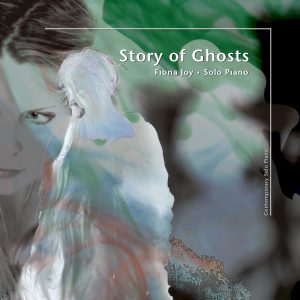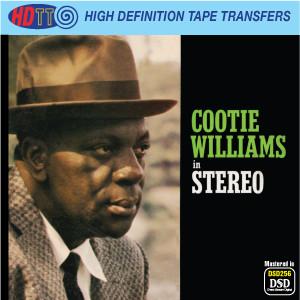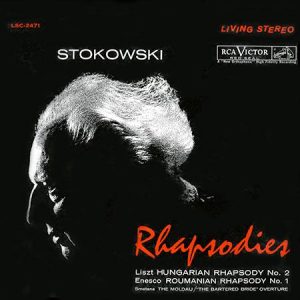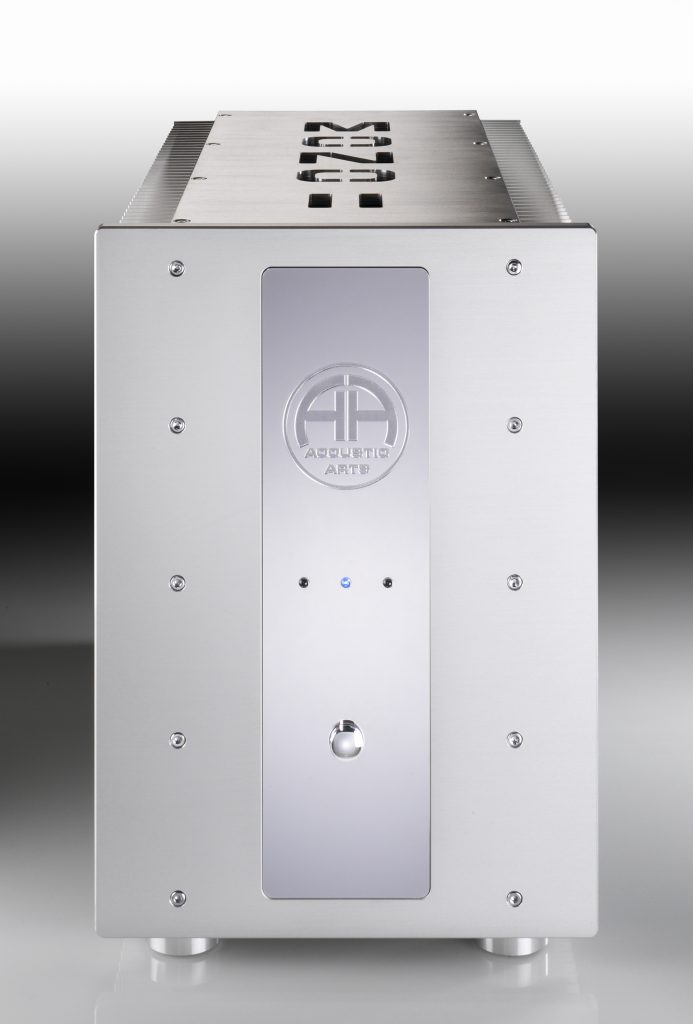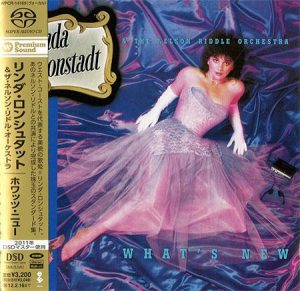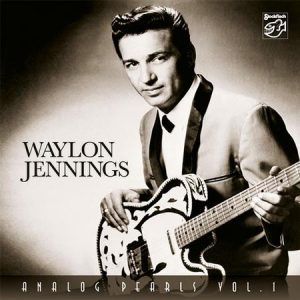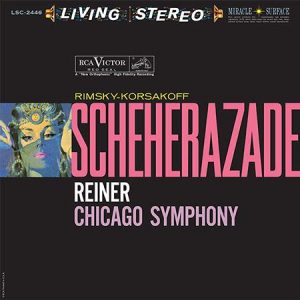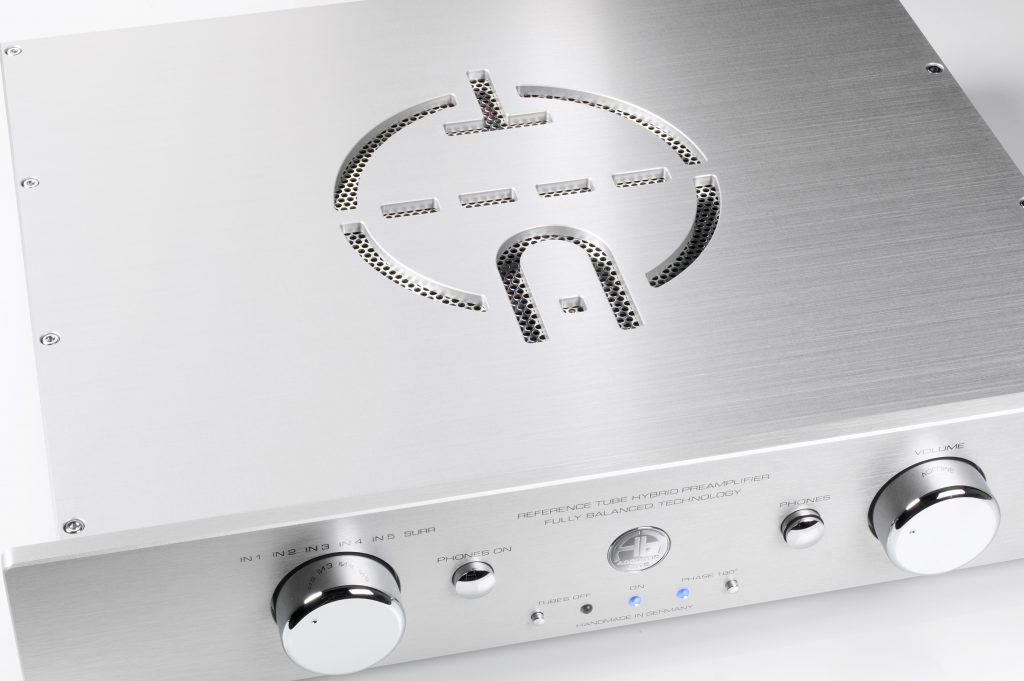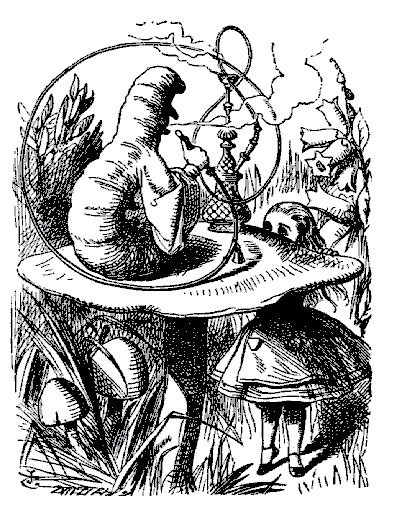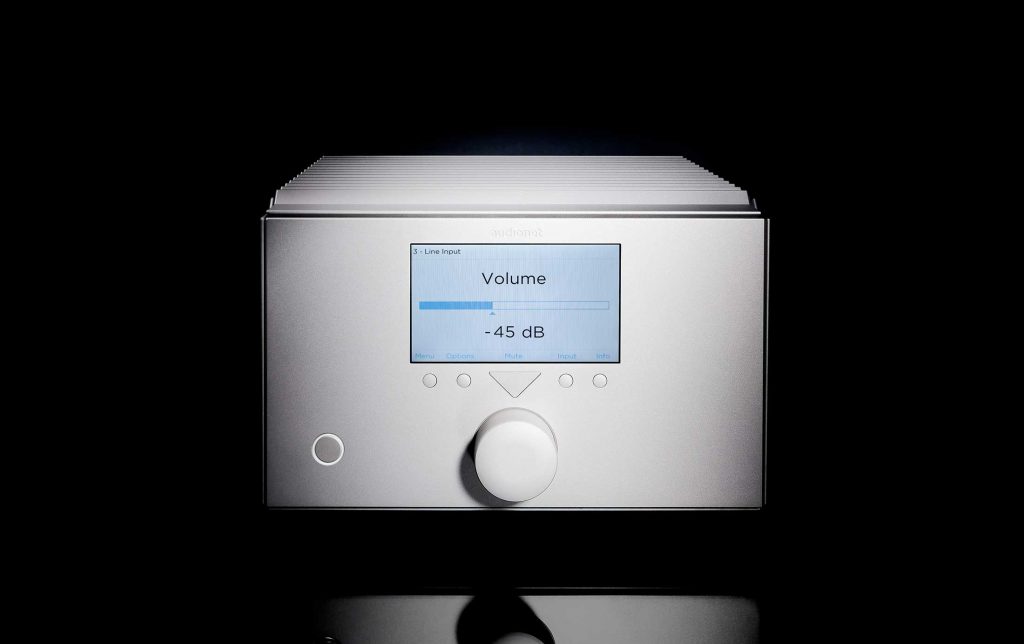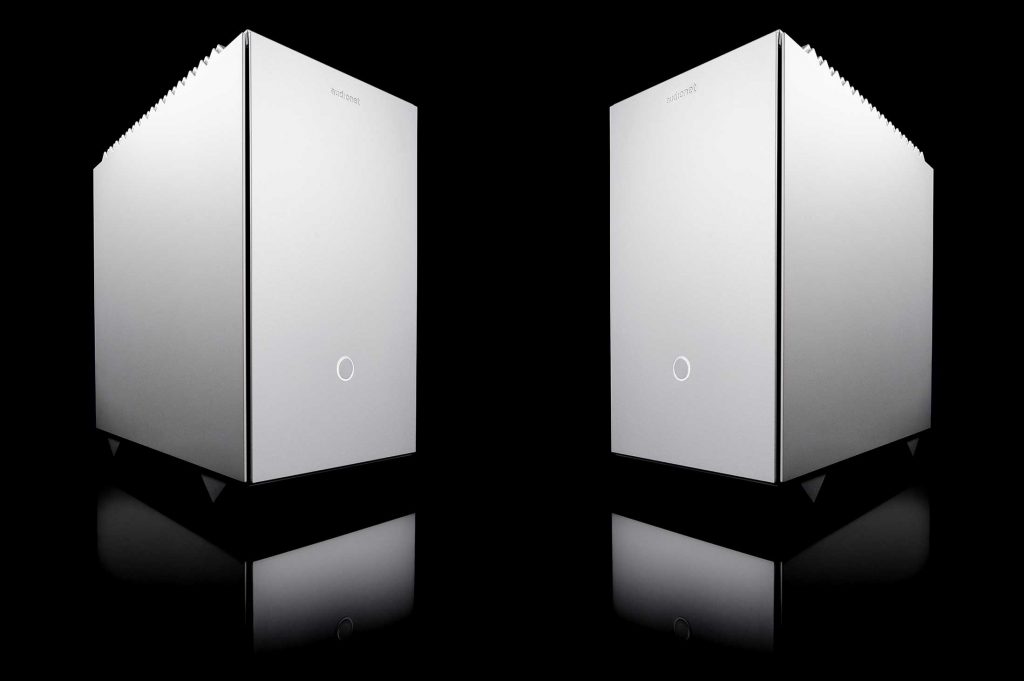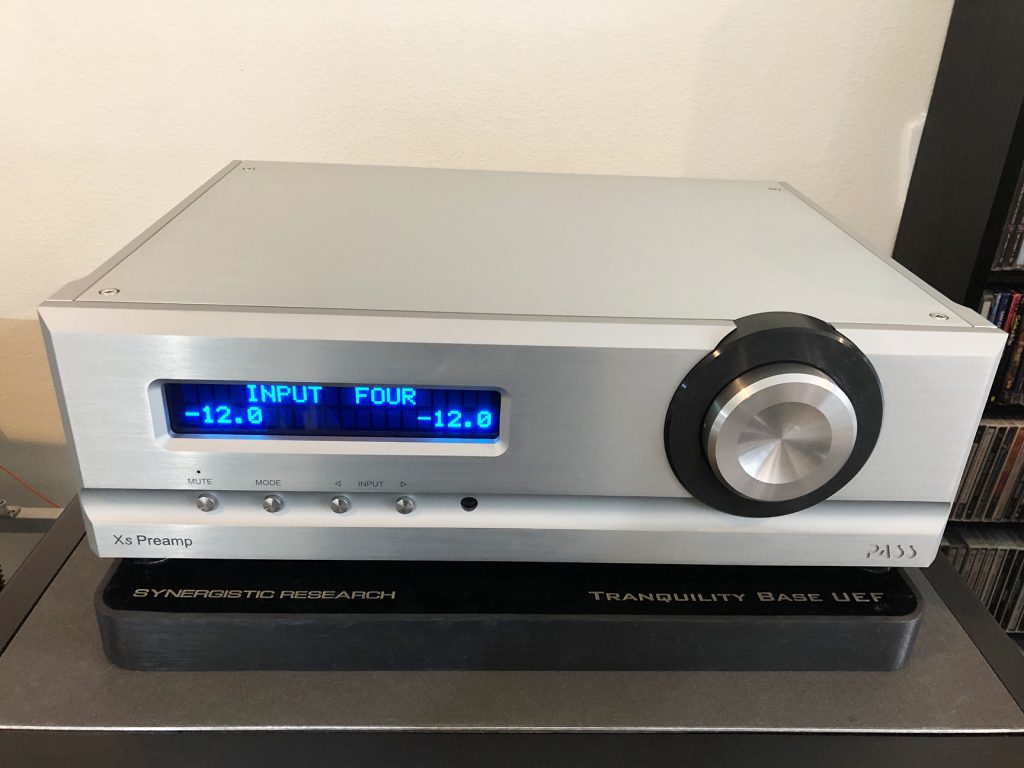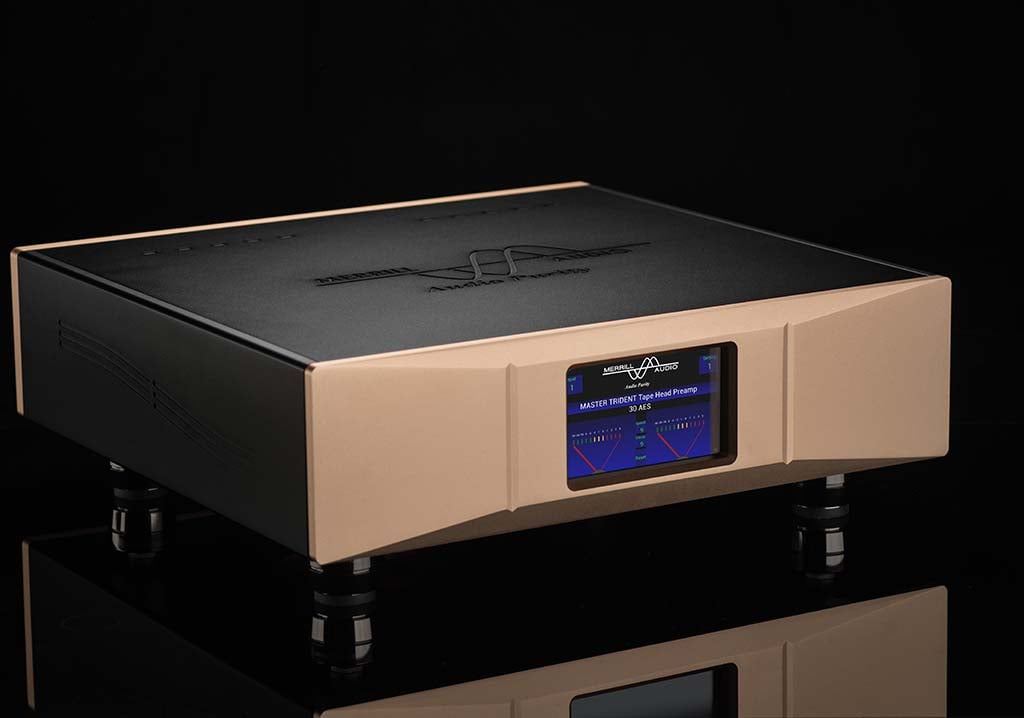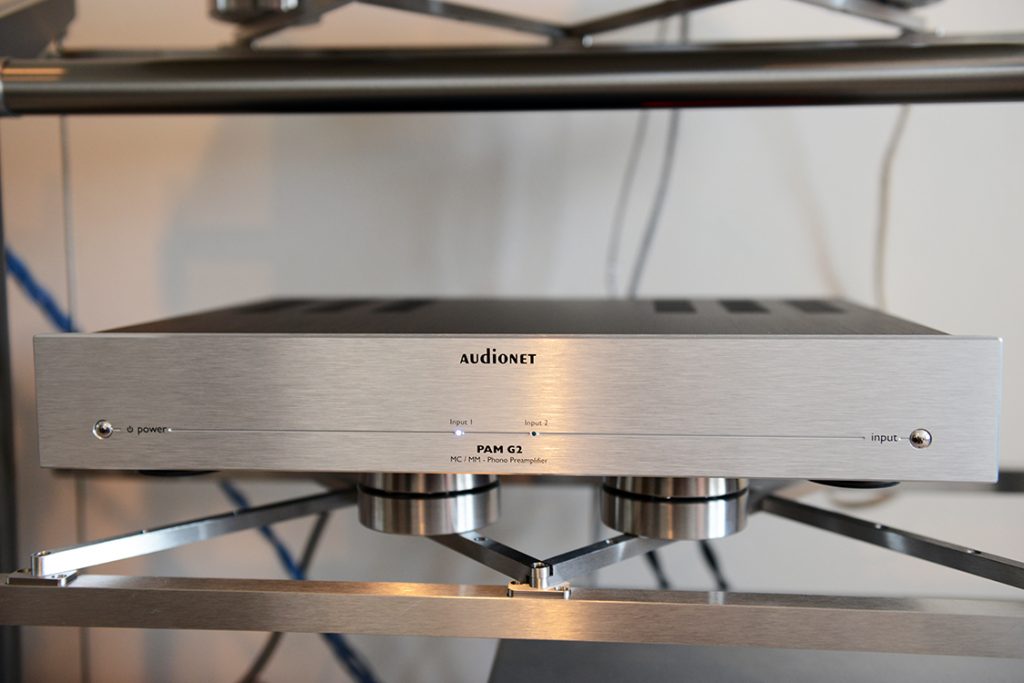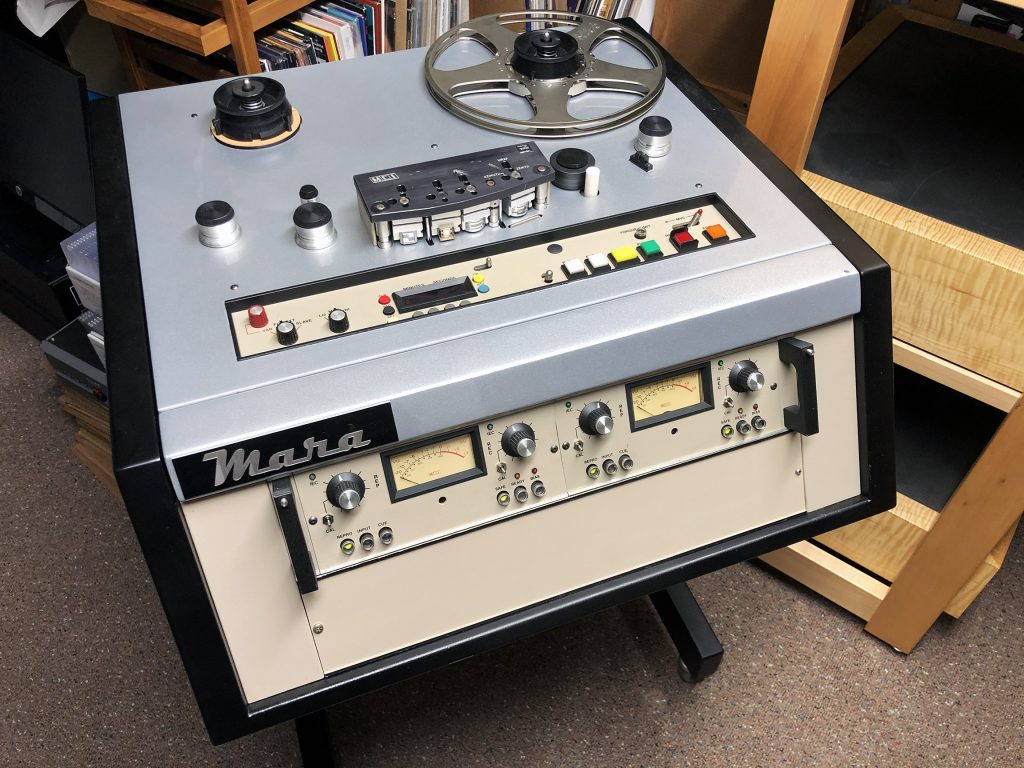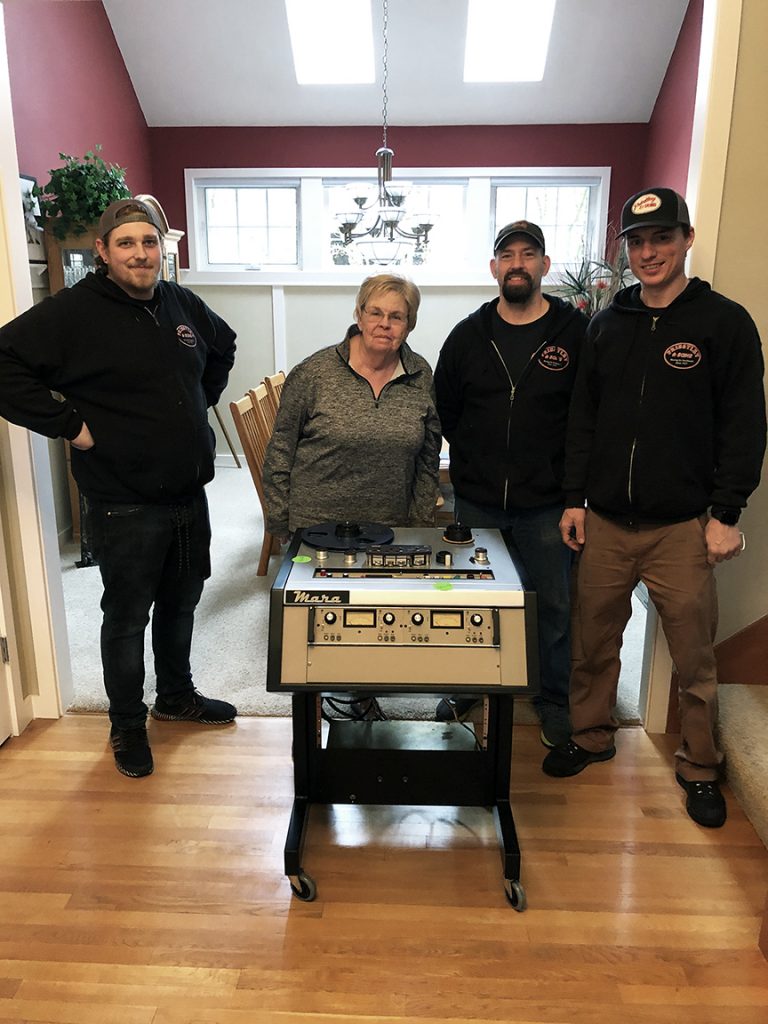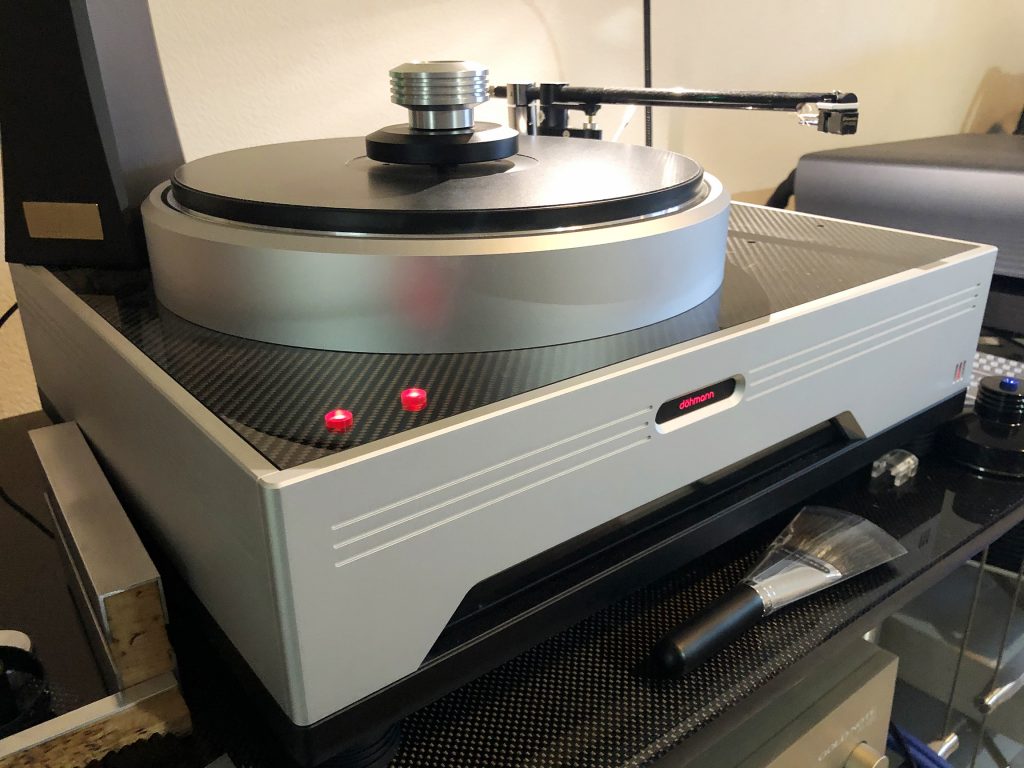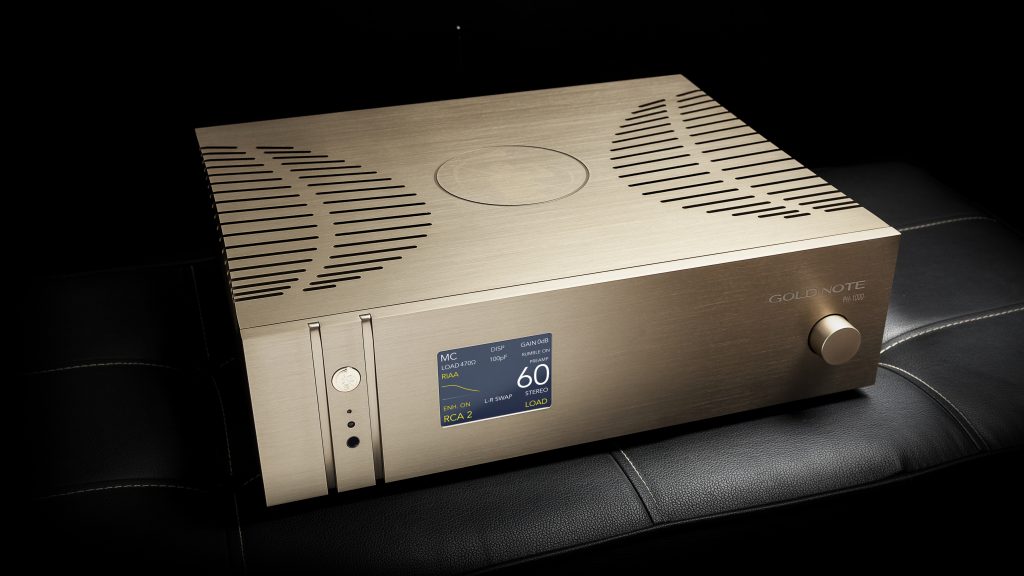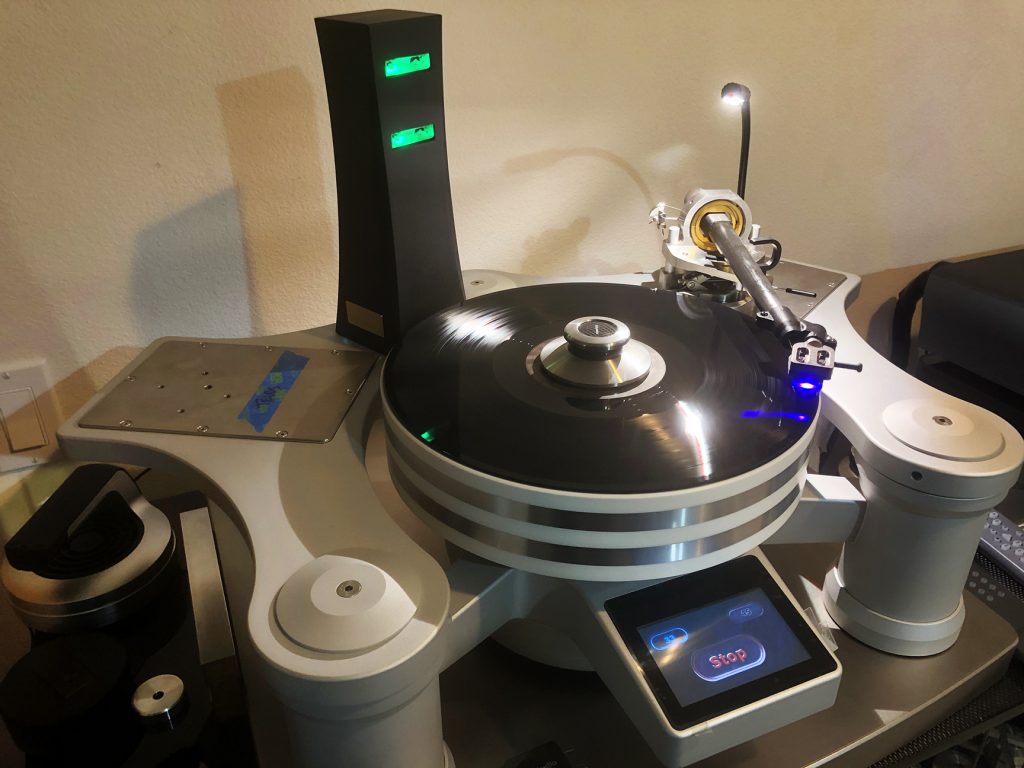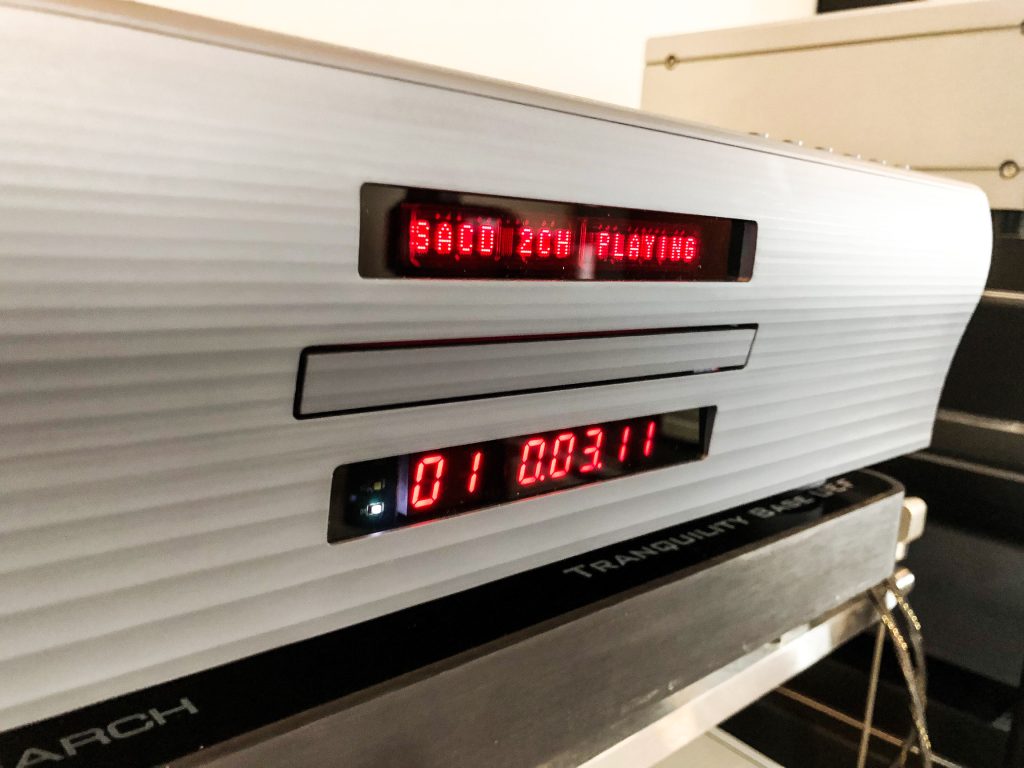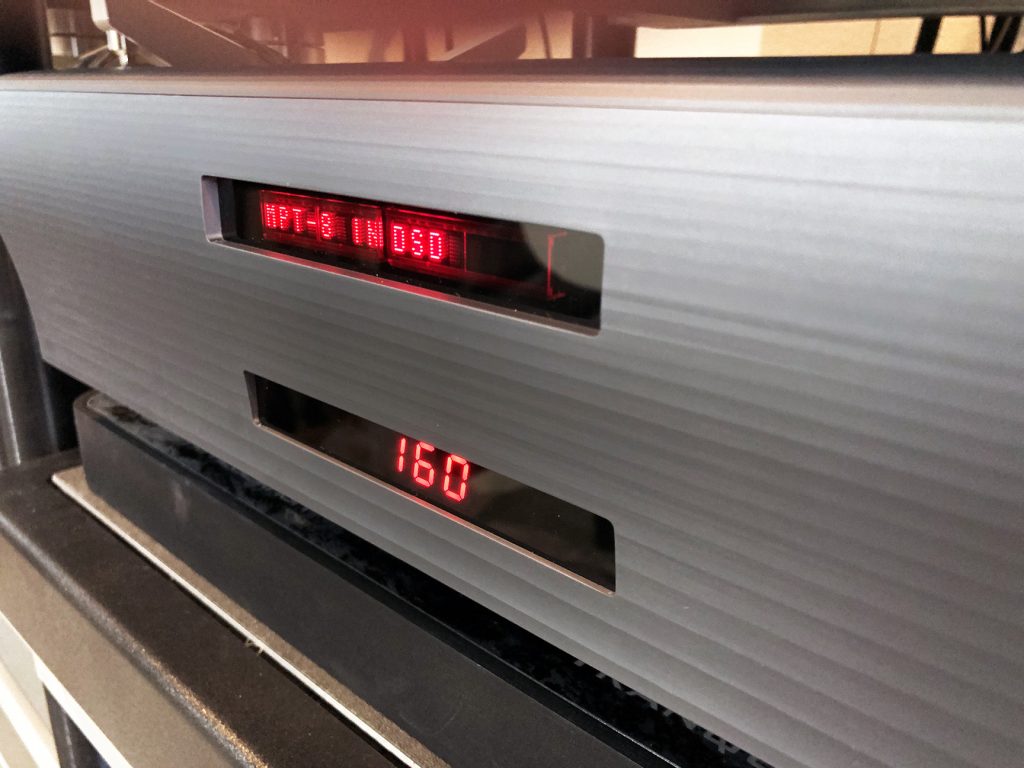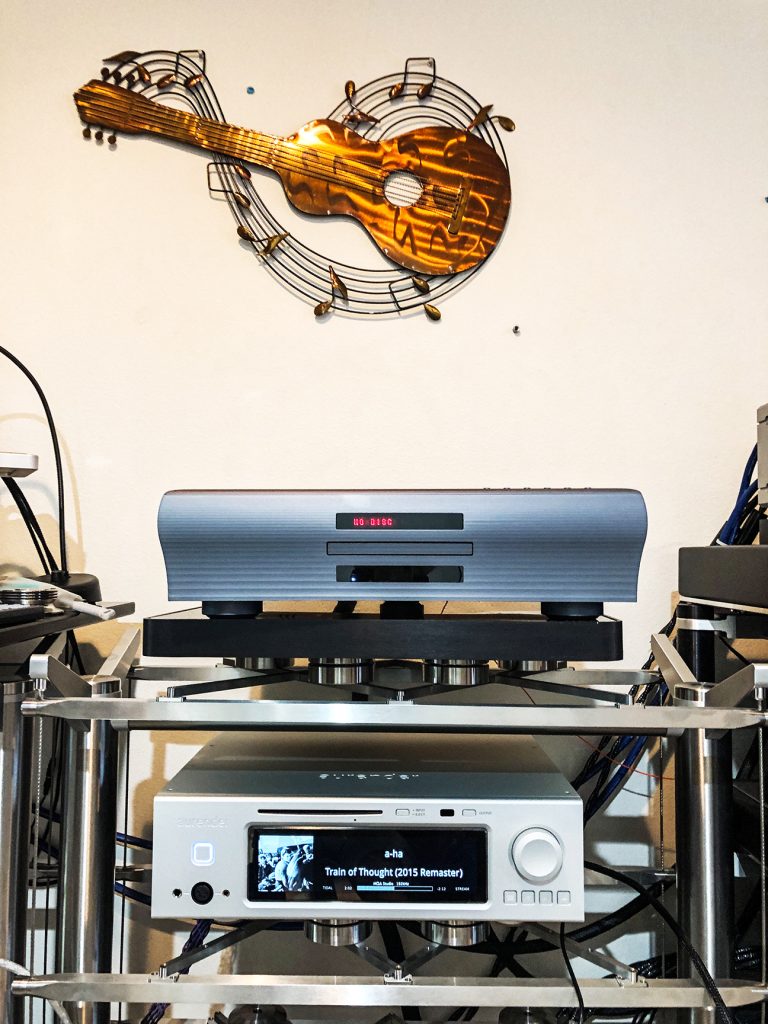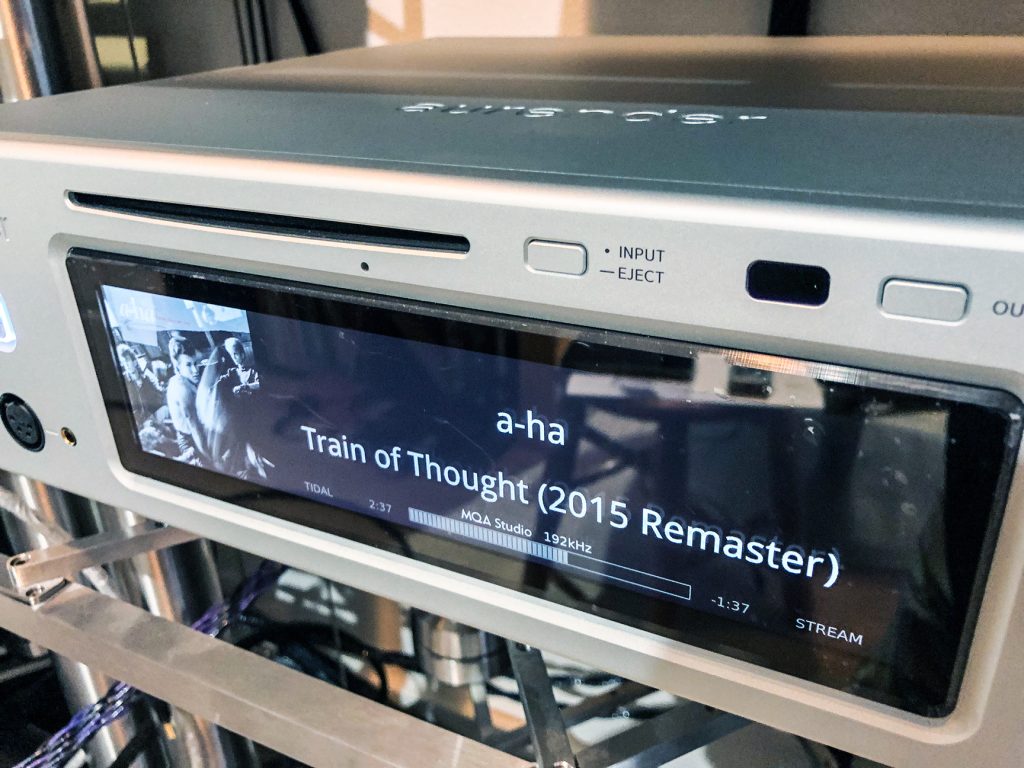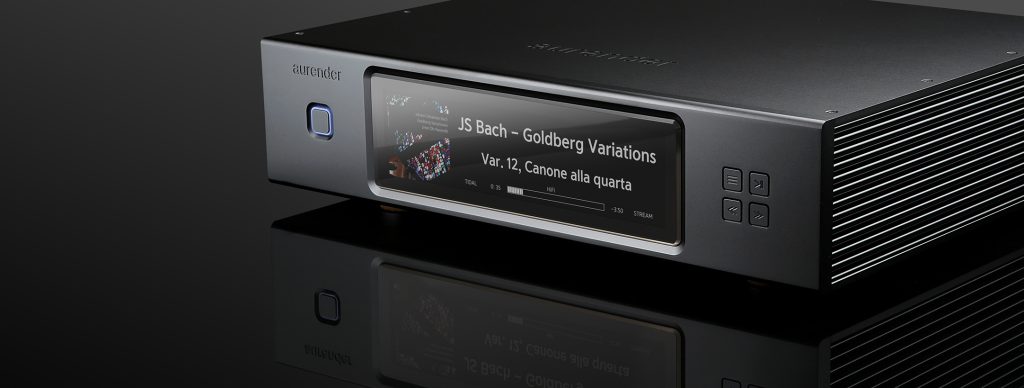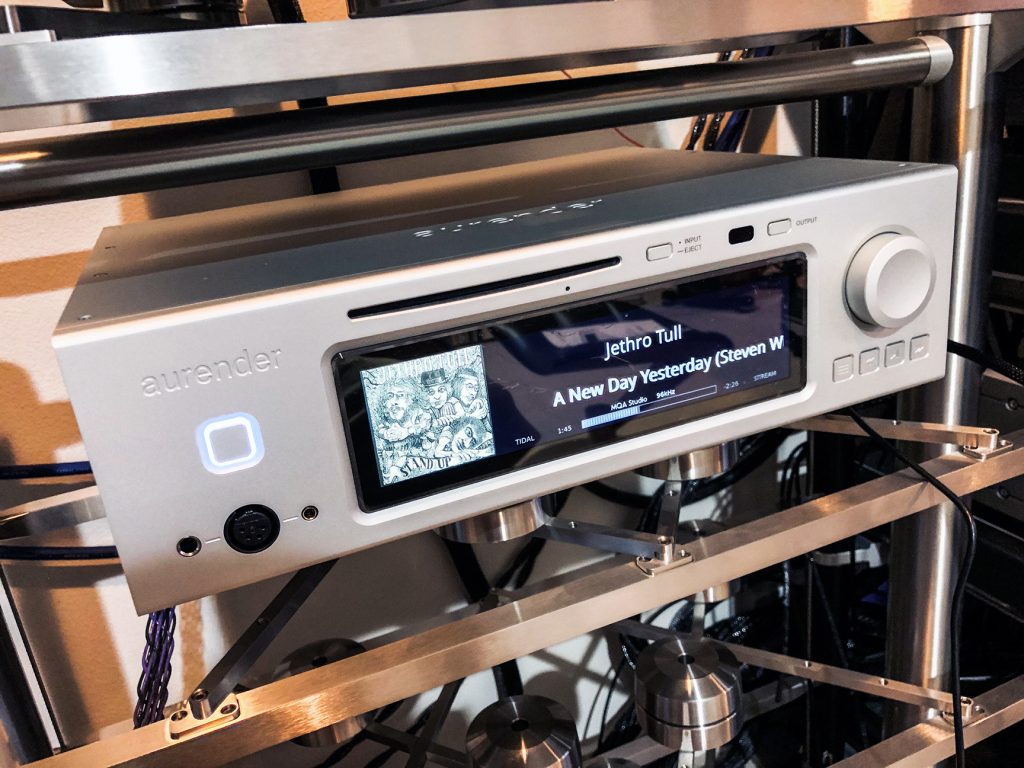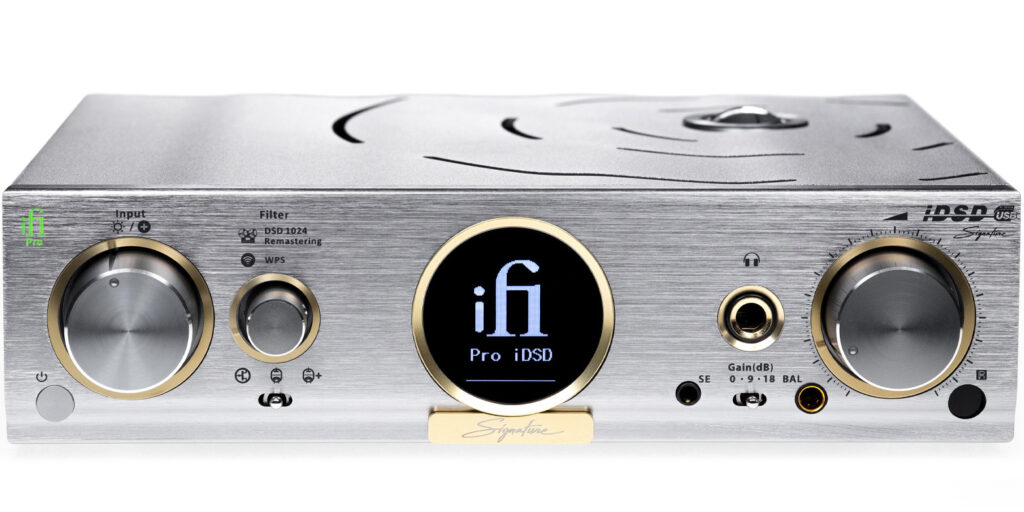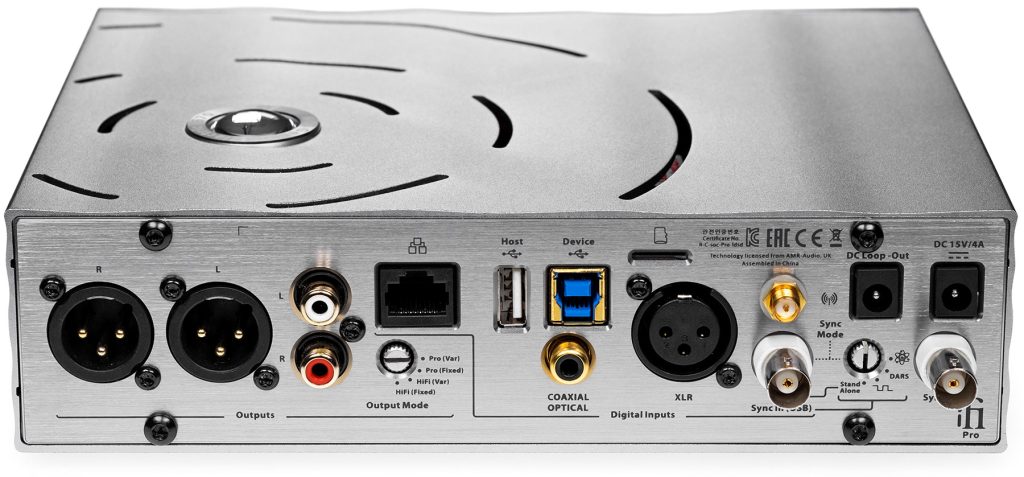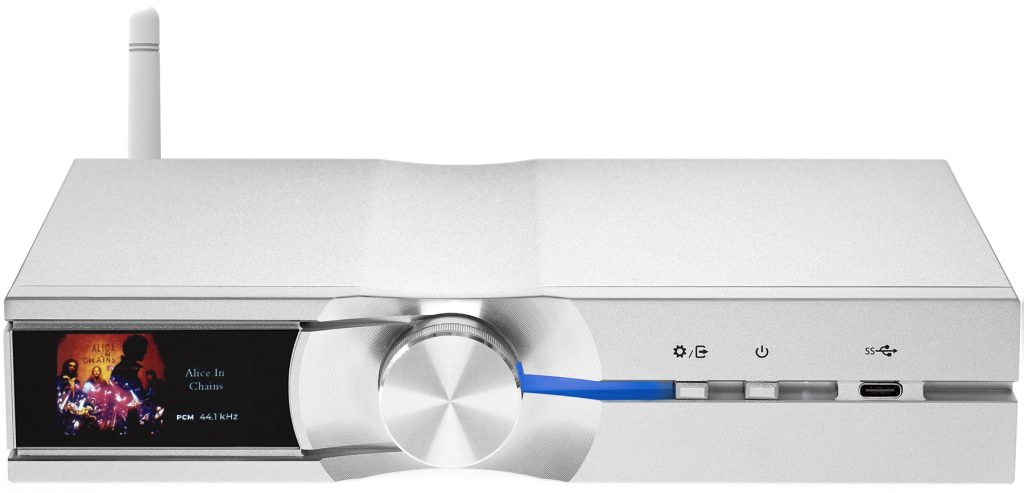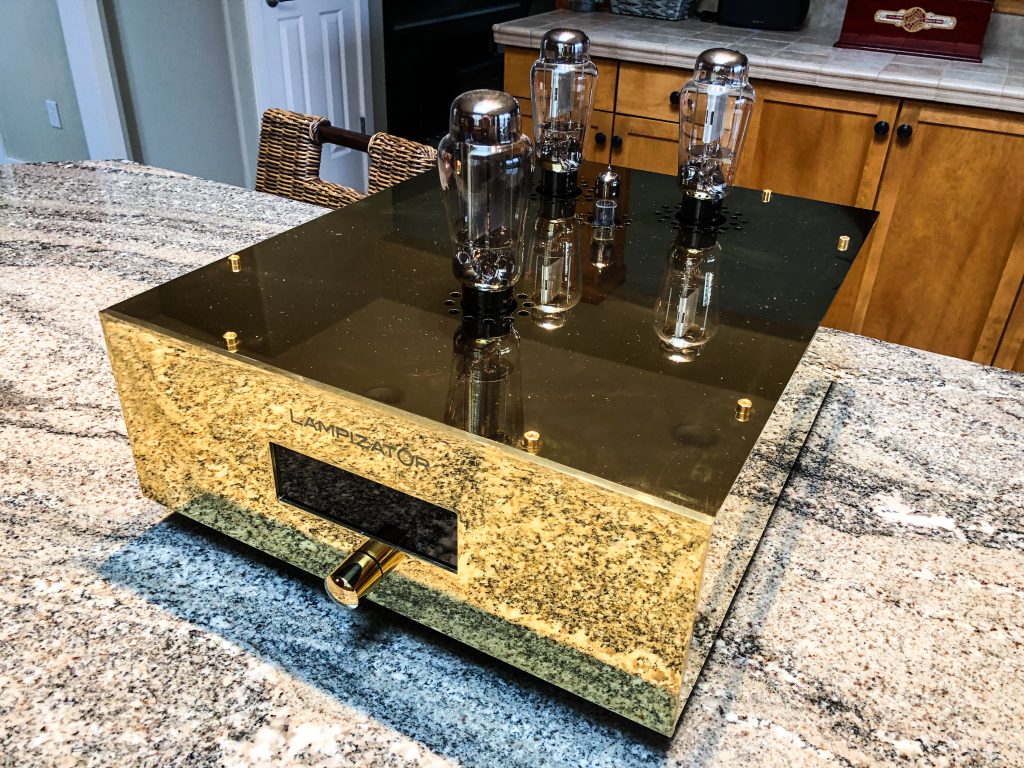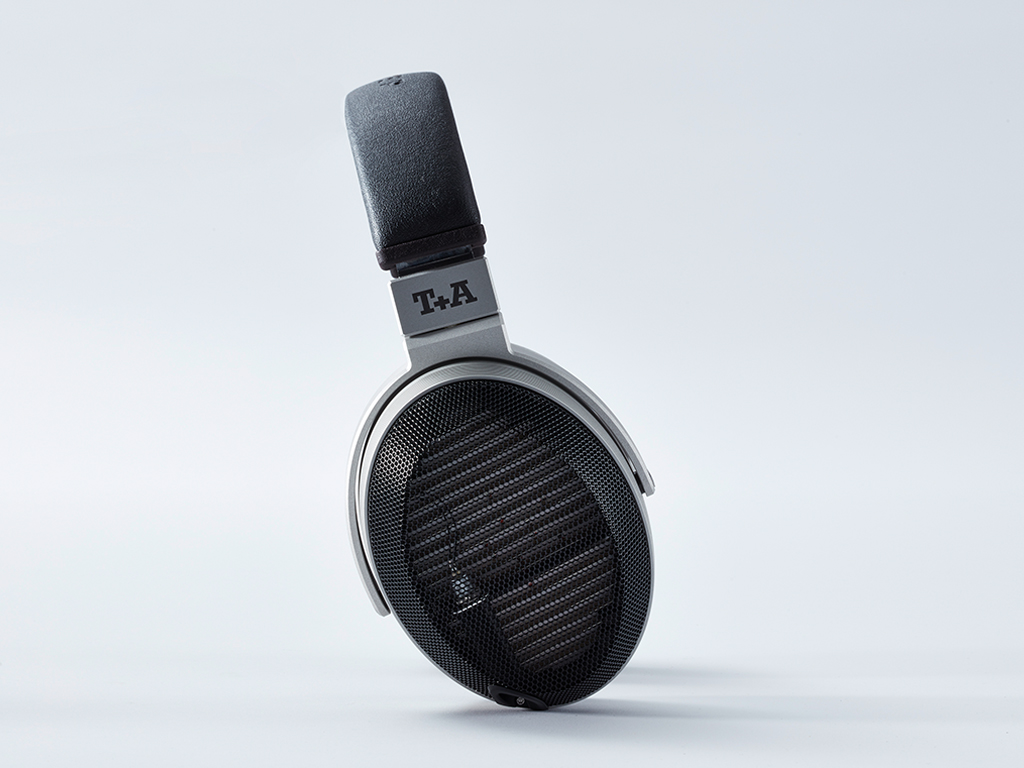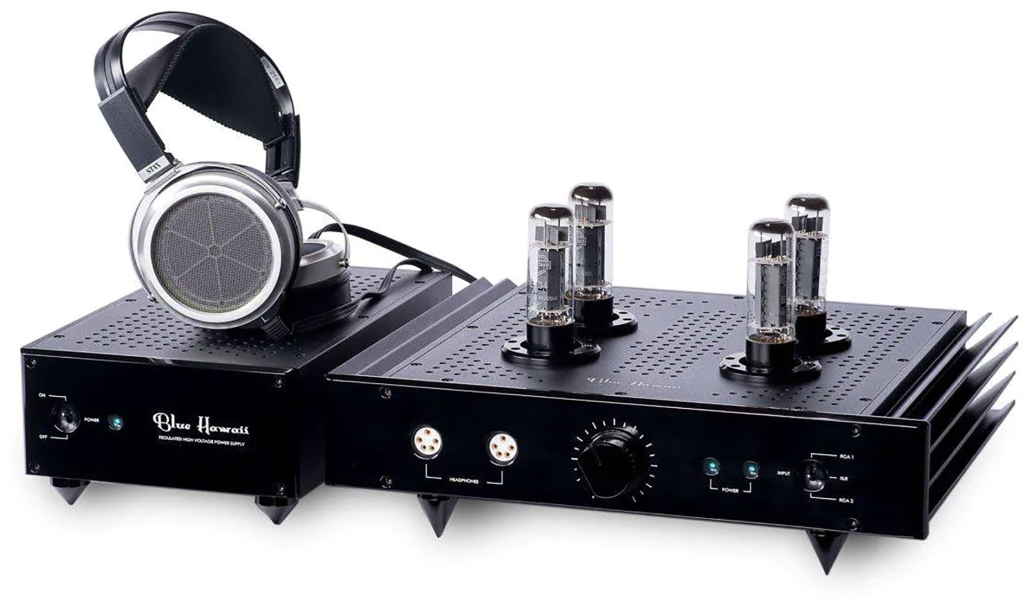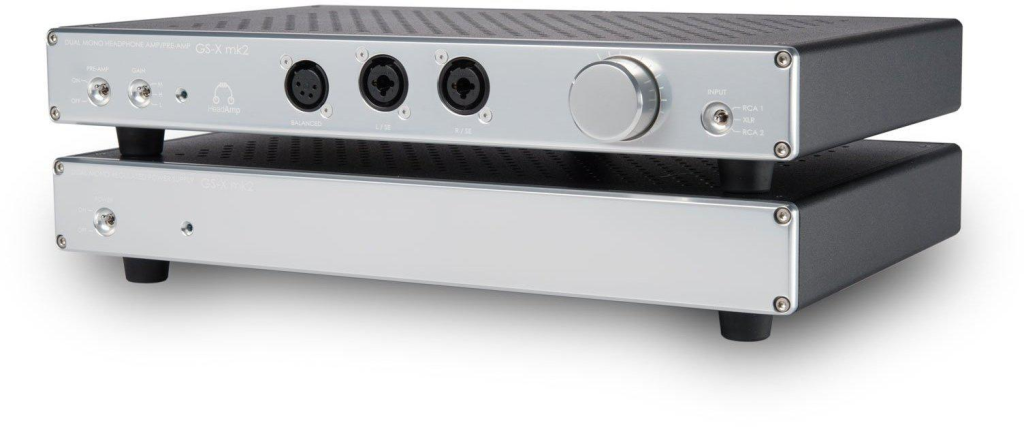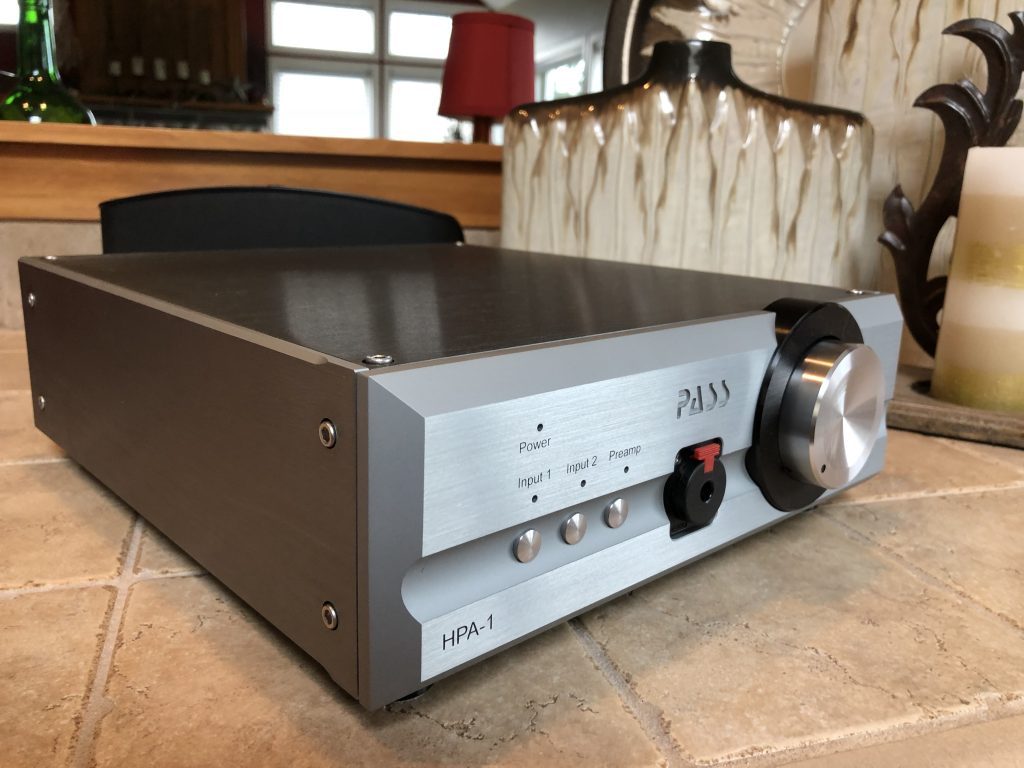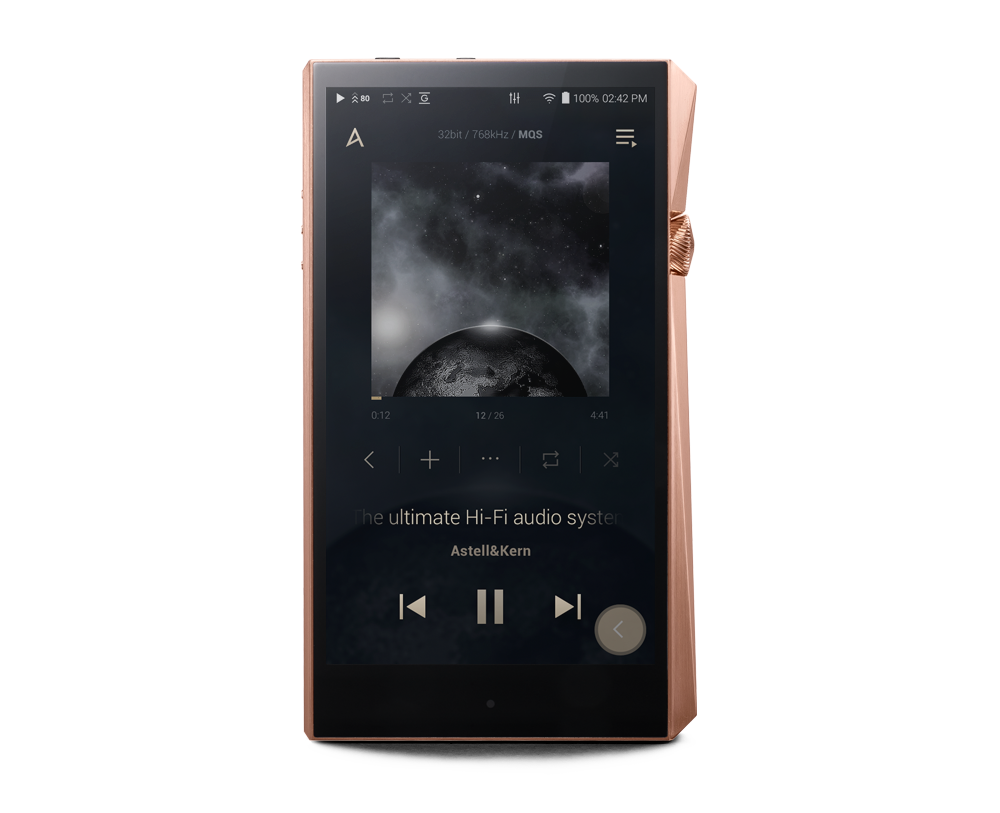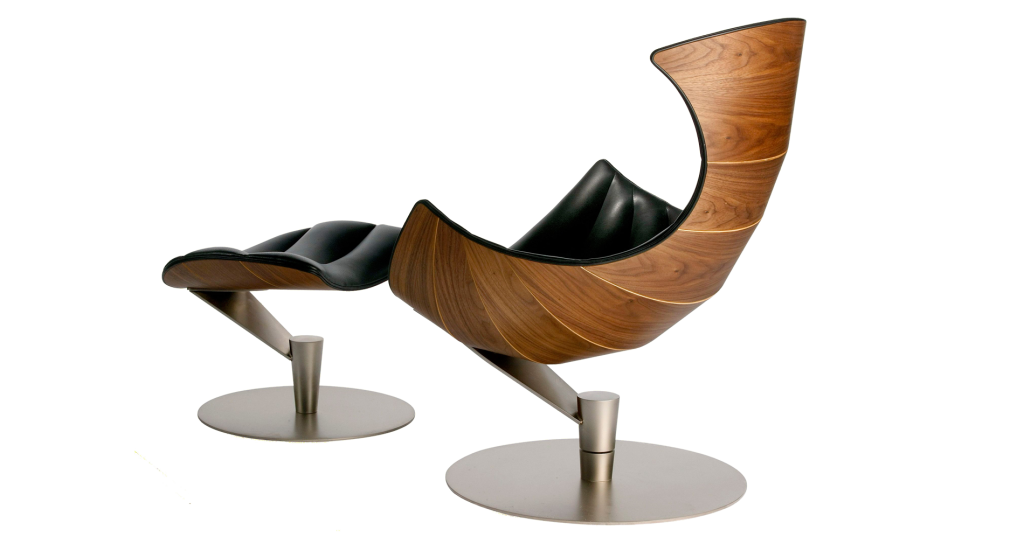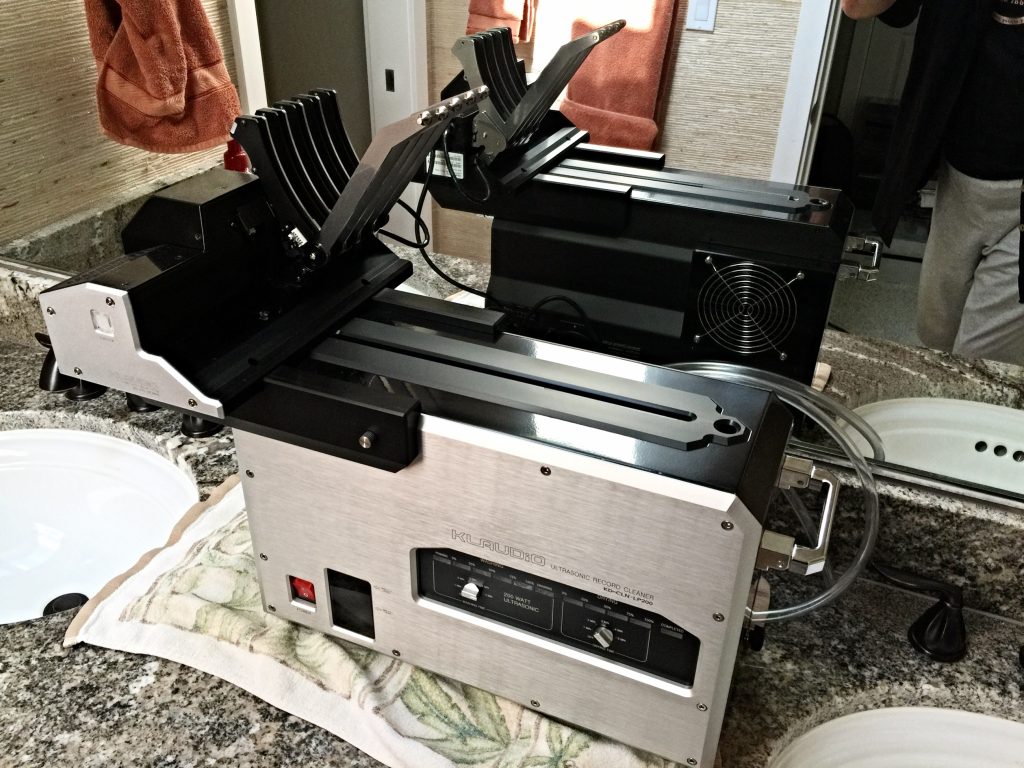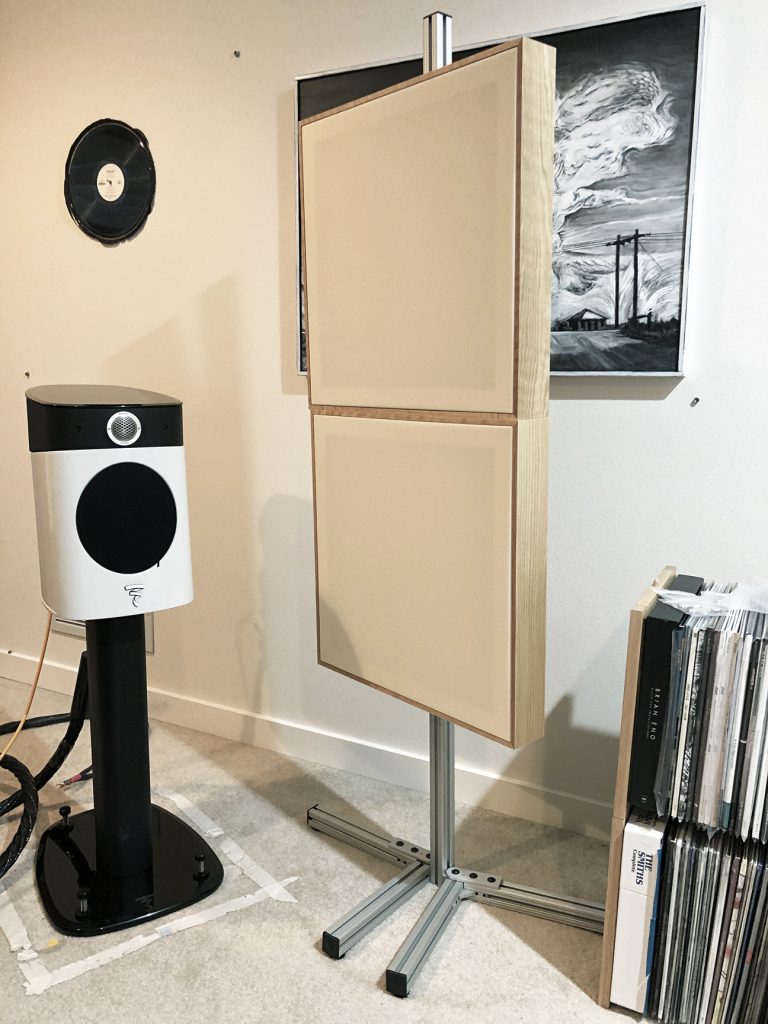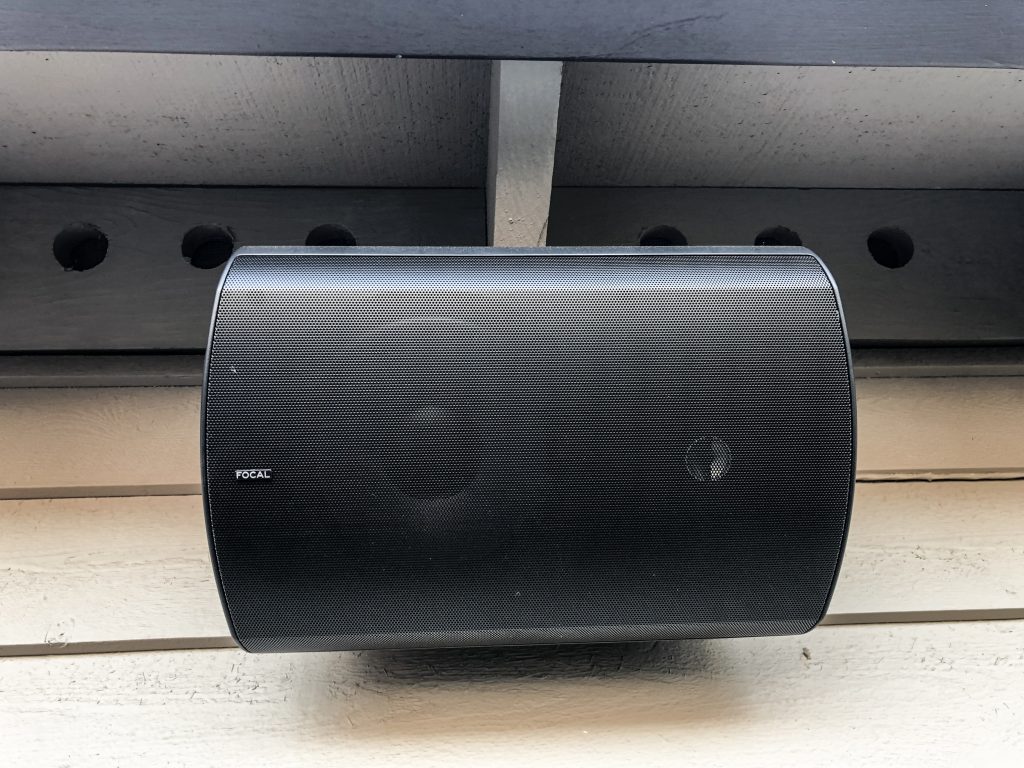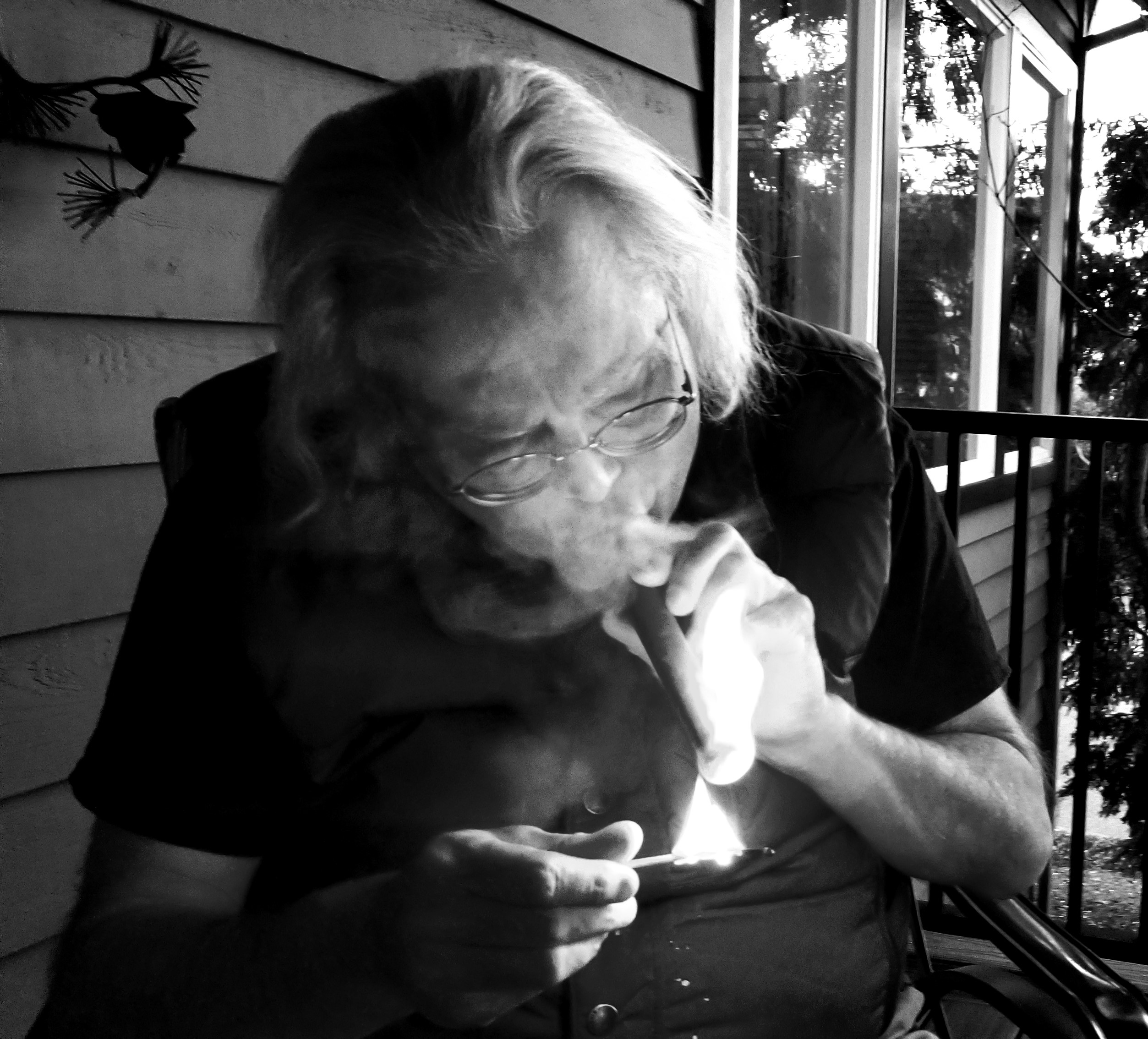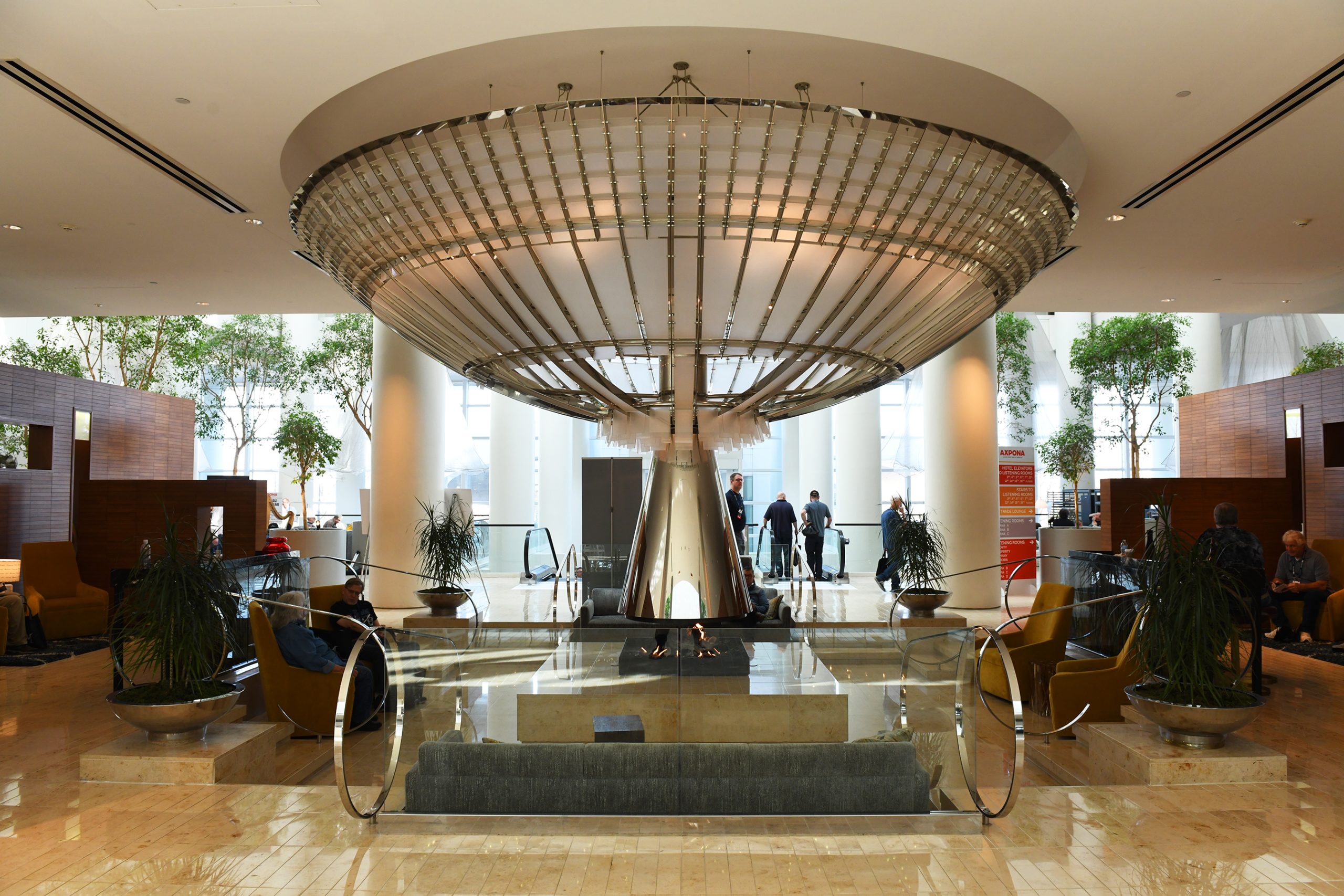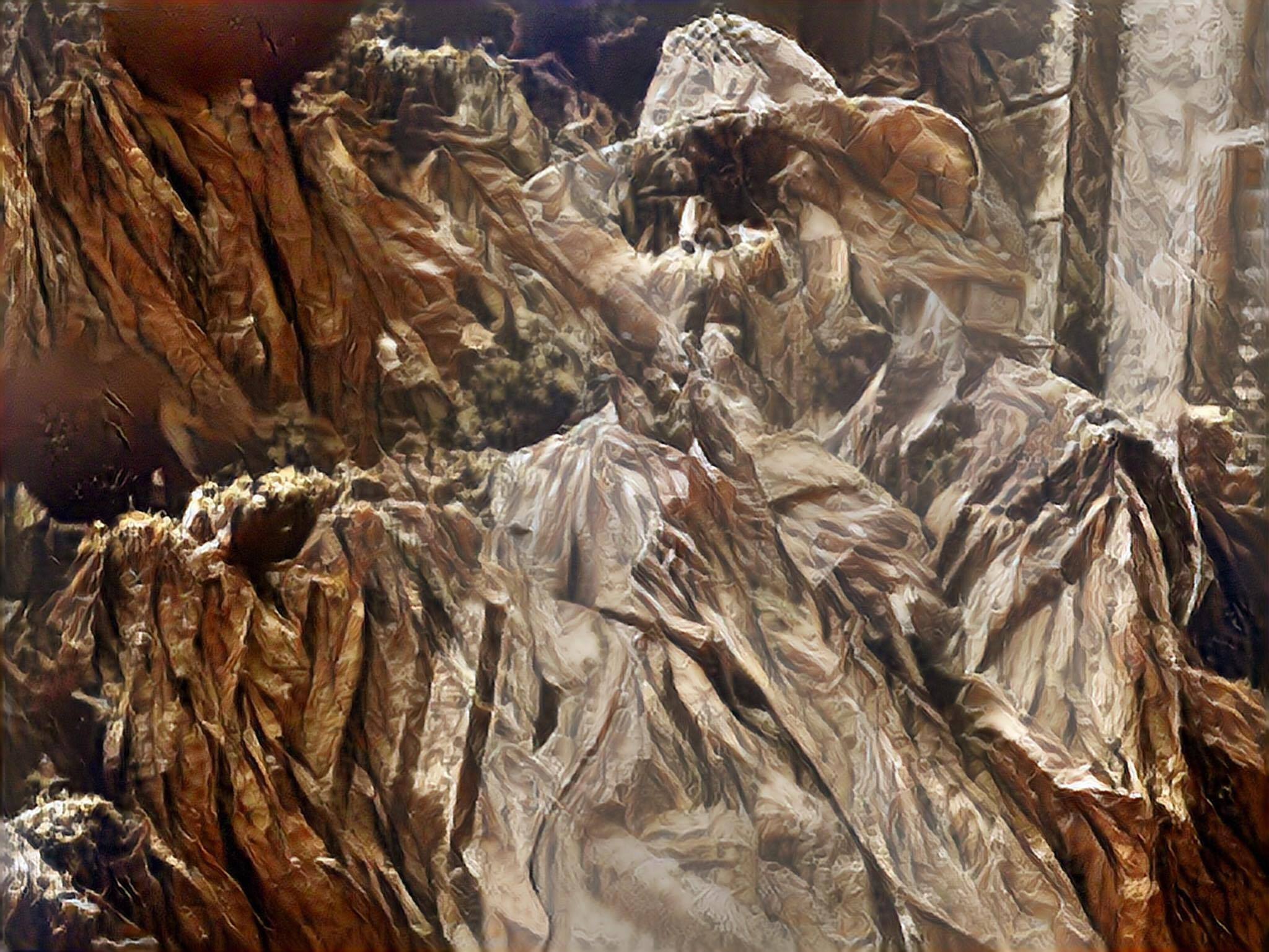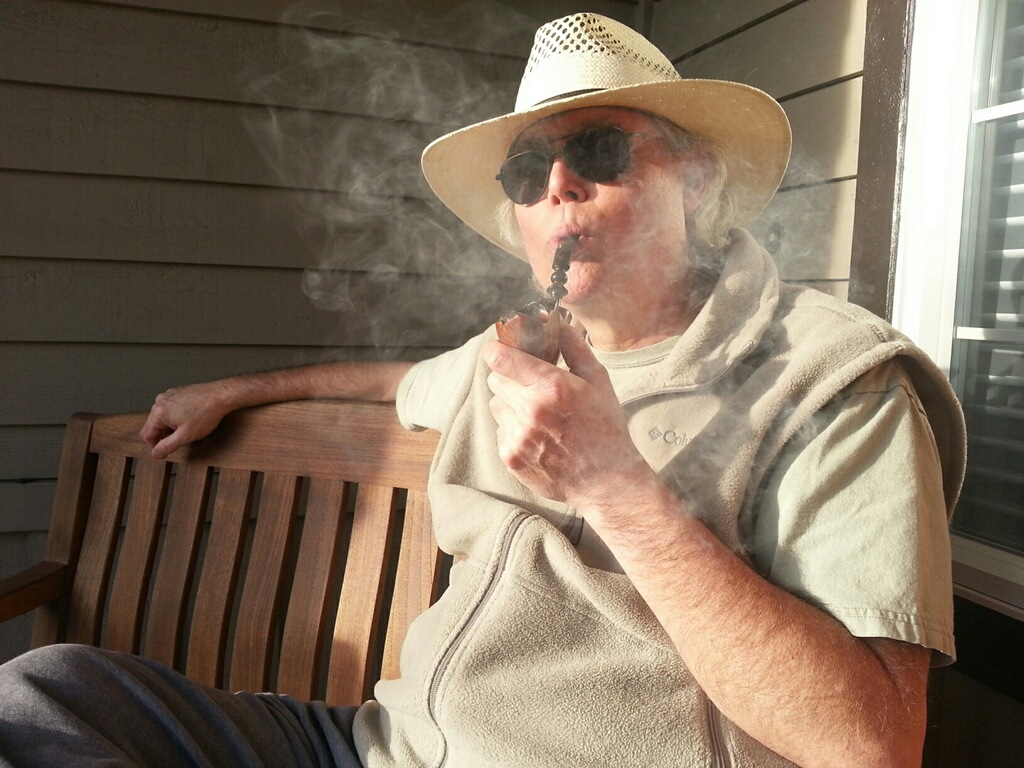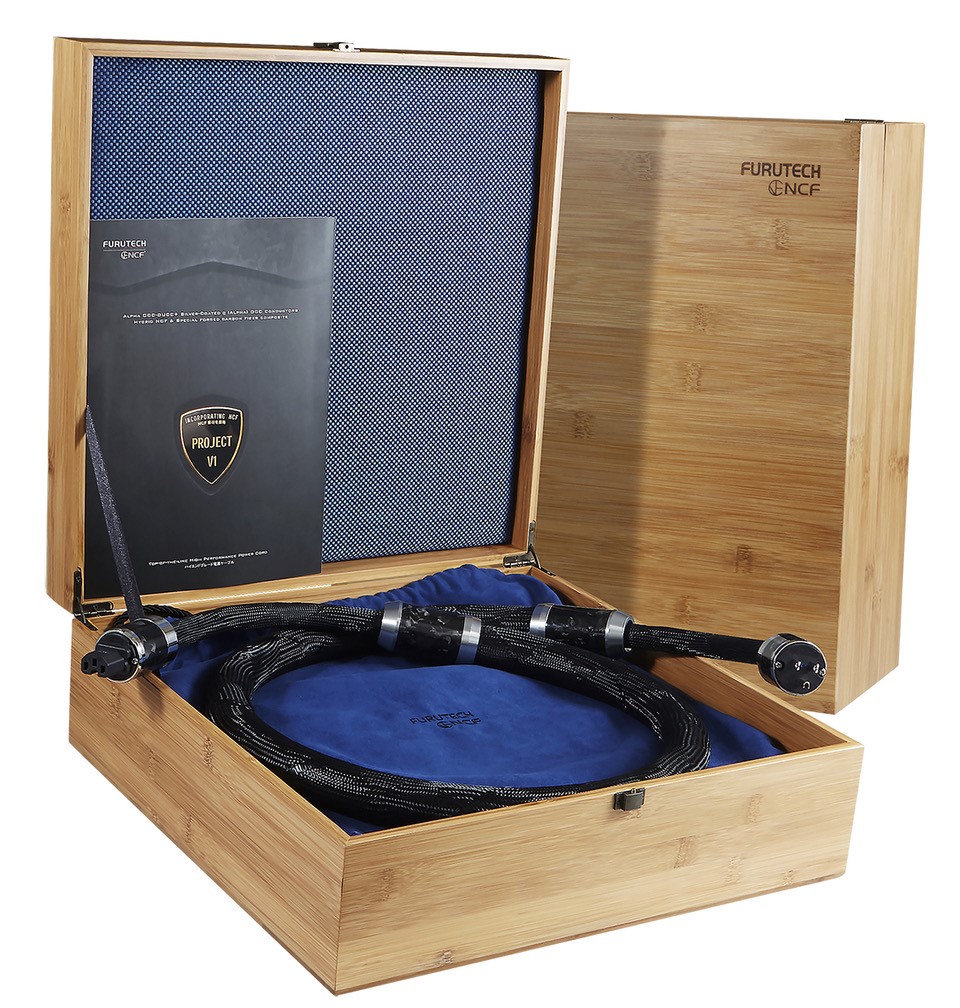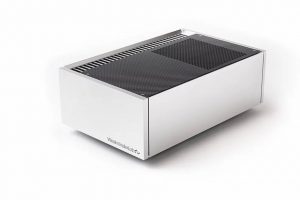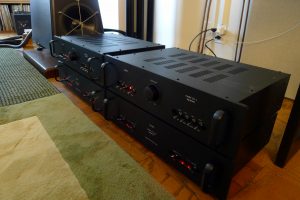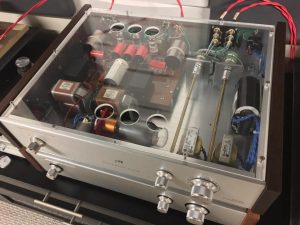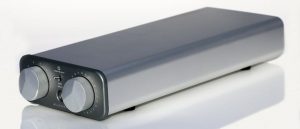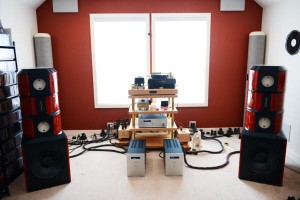Image courtesy of Accustic Arts
A bloody busy year so far, with much more to go.
One of the projects that I took on very early in 2018...with some hesitation, I confess, due to the workload that was already building...was an offer to hear the Accustic Arts Tube Preamp II Mk2 and Mono II Monoblock Amplifiers. It was going to be tough to work them in, since I had other obligations that had already been taken on. Furthermore, I'd be at AXPONA 2018 in Chicago in April, and the Munich Show in May. Not much time left to evaluate unfamiliar components.
But, I decided to give it a go, provided that the US distributor, Randy Forman, was willing to be patient.
He was willing, and so I took it on.
The story follows...
Product details
According to Accustic Arts, these are the specs for the review samples that were evaluated here.
Accustic Arts Tube Preamp II Mk2 Specifications
- Inputs: 3 x fully balanced high level inputs (XLR), 2 x unbalanced high level input (RCA), 1 x surround bypass (RCA)
- Outputs: 2 x fully balanced line-out (XLR), 2 x unbalanced line-out (RCA), 1 x unbalanced fixed out (RCA), 1 x headphone output (1/4″ stereo female jack)
- Maximum gain: 4-times / 12 dB (balanced to balanced), 8-times / 18 dB (unbalanced to balanced)
- Signal difference left/right: 0.2 dB (from 0 dB to –40 dB)
- Input resistance: balanced: 2 x 50 kΩ, unbalanced: 50 kΩ
- Output resistance: balanced: 2 x 34 Ω, unbalanced: 34 Ω, AC coupled with 2.2 µF
- Max. output voltage: balanced: 19.8 Veff on 10 kΩ, unbalanced: 9.9 Veff on 10 kΩ
- Signal-to-noise-ratio: -90 dB (A weighted)
- Intermodulation distortion: 0.006 % with 4.0 Veff on 10 kΩ
- Distortion (THD+N): 0.002 % with 4.0 Veff on 10 kΩ (22 Hz – 30 kHz)
- Tube type: Dual triode E83CC / 12 AX 7 – selected and matched
- Power consumption: approx. 20 watts (unit totally on), approx. 3.5 watts (tube section in "standby" mode)
- Dimensions (H x W x D): 100 x 482 x 375 mm / 3.9 x 19 x 14.8 inches
- Weight: 12 kg / 26.4 lbs.
Accustic Arts Mono II Amp Specifications
- Voltage gain: 31.0 dB
- Total transformer power: max. 1200 VA (watts)
- Power supply capacity: more than 80,000 µF
- Input impedance: balanced (XLR): 2 x 20 kΩ, unbalanced (RCA): 100 kΩ
- Rated power output: max. 700 watts on 2 Ω, max. 500 watts on 4 Ω, max. 300 watts on 8 Ω
- Rise time/fall time: 3.0 µs with 4 Ω load (square-wave 20 kHz, 12 Vpp)
- Crosstalk: 111 dB with 1 kHz
- Signal to noise ratio: -104 dBA (ref. 6.325 V)
- Intermodulation distortion: 0.007 % with 10 watts on 4 Ω
- Distortion factor (THD+N): 0.0012 % on 4 Ω load with 1 kHz and 10 watts
- Power consumption: approx. 100 watts (without load)
- Dimensions (H x W x D): 350 x 240 x 430 mm/13.8 x 9.4 x 16.9 inches
- Weight: approx. 25 kg / 55 lbs. (depends on country)
Setup
The Accustic Arts Mono II monoblock amplifiers on Critical Mass Systems isolation filters (photograph and image processing by Robinson)
I'm glad to say that setup of the AA gear was very straightforward. The amplifiers were only moderately heavy at about 55 lbs. (Believe me, we haul about amplifiers that are much heavier than this!) With the help of son John the Strong, I was able to shift the PASS Labs Xs 150 monos temporarily out of the way from the top shelf of the Critical Mass Systems rack. Then we hoisted the AA Mono II's into place.
The Accustic Arts Tube Hybrid Preamp II on our Stillpoints ESS Grid Rack
Likewise, the AA Tube Preamp II Mk2 preamp went onto the top shelf of our left Stillpoints ESS Grid Rack (#1), where it fit easily on our trusty-rusty Black Diamond Racing carbon fiber shelf. The preamp was hooked up to the amps via a longish run of Kubala-Sosna Elation! RCA cable…about 16 feet. The signal feed from the Merlot DSD DAC was via JENA Labs, with the JENA Labs Model Three providing power. These are known world-class references in our system here, and would reveal any weaknesses in the Accustic Arts gear.
At the particular point that we were able to put the AA pre and amps into place, due to the complex cabling on the source side, we were without a turntable in range on that side of the listening room. (The Xact Audio The Beat Turntable with the Schroder Linear Tracking Tonearm did not have sufficient phono cable length to reach the AA preamp.) So that meant that we stayed with SACDs and Single, Double, and Quad DSD, via the splendid Playback Designs Sonoma stack (Merlot DAC, Syrah Music Server, and OPPO BDP-103 with OpBox optical converter). Given the terabytes of DSD recordings that we have in our reference library on our local area network here, and the relatively short time that I would be allocating for this review, this was no problem at all.
We hooked the RCA output of the Merlot Quad DSD DAC into one of the RCA inputs in the Tube Preamp II Mk2. Both the Playback Designs BDP-103 OpBox (SACDs) and the Syrah Music Server were connected to the Merlot, so it was the central connection point for passing signal on to the Accustic Arts electronics.
Given the short review time line that was available, I fired the system up immediately. As usual, I powered up the AA Tube Hybrid Preamp first. It takes a minute or two to come up to speed, due to the soft-start circuitry that it (wisely) employs. Then I brought up the Mono II amps, a simply push-button operation. There were no problems upon initialization, nor were there any during the weeks of review. The Accustic Arts gear was well-behaved, stable, and without any problems, anomalies, or complications. And no, you can't always count on that from high-end audio gear…just ask the guy who's had to deal with DOA components or troublesome power-ups more than once or thrice in his career.
So…good show!
A couple of quick notes on the AA components.
Image courtesy of Accustic Arts
First, they are drop-dead beautiful! ‘Nuff said!
Second, the preamp is a hybrid, with tubes on the input side, and solid-state on the output. Its design is fully balanced, running in Class A. As Accustic Arts puts it on their Web site:
"Tubes are excellent voltage amplifiers, but can only supply a limited amount of current. As a result, in the TUBE PREAMP II – MK2 we place the tubes exactly there where these clear advantages can influence the acoustic pattern, i.e. for the voltage amplification. In places where current has to be supplied, e.g. for impedance conversion, we use the proven premium IC OPA627® from Burr Brown / Texas Instruments. This combination allows us to achieve very low-resistance outputs which are also characterised by a high current capability. We use solid state technology and tubes to take advantage of their physical characteristics to realise an exceptional, analogue sound experience with an extremely low harmonic distortion and excellent harmonic distortion spectrum which sets standards.
As opposed to most tube preamplifiers, the TUBE PREAMP II – MK2 is in fact fully balanced, i.e. with 4 completely separate amplification stages from the signal input to the signal output.
The 4 amplification stages are divided into one inverting and one non-inverting signal path per channel. Each of these amplification stages contains a high precision tube manufactured according to military specifications. This principle enables perfect channel separation.
The loudness is adjusted via a high-end selective, high precision 4 channel potentiometer. It is natural that the TUBE PREAMP II – MK2 functions completely according to the proven Class A principle."
The tubes used are the "so-called dual triode tube type E83CC" from the "tube group 12AX7." AA claims that this produces a result that is "…pleasantly warm with a very balanced sound pattern, a sophisticated bass range, clear high frequencies, good dynamics and low harmonic distortion."
(For further reading on the technicals of the AA Tube Preamp II Mk 2, go HERE.)
That's an encouraging sonic profile; the question was, would I hear these qualities in the audio trenches?
Third, in terms of their design, the Mono II amplifiers were a different kettle of fish. They are beautiful monoblocks, of a relatively compact design, operating in pure Class A. There are no tubes here; 12 MOSFETs do the heavy lifting. The toroidal transformer is 1200 VA; according to Accustic Arts, there are "eight enormous power supply capacitors manufactured in Germany to our specifications with a respective individual capacity of 10.000 µF" to provide the power reserves.
The power rating is 300 watts into 8 ohms, not quite doubling to 500 watts into 4 ohms, and topping out at 700 watts at 2 ohms. These are figures that will drive most speaker loads with reasonable authority and aplomb, and so should meet the needs of even the most demanding audiophile low-impedance loudspeakers (you know who you are!).
For more details on the AA Mono II's, go HERE.
I could fit the AA components in for evaluation for only about a month…it was time to jump to it.
Listening impressions
Since I had no turntable in operation, I focused on DSD- and SACD-based recordings. The albums that I used during my time with the Accustic Arts Tube Hybrid II preamp and Mono II amps were my usual gang of DSD references. Many of the DSDs were downloaded from key sites like NativeDSD.com, High Definition Tape Transfers (HDTT), Blue Coast Records, Acoustic Sounds' Superhirez.com, and Opus3 Records. Others were transferred from RTR tape and SACD. There were even some needle drops at Double DSD along the way.
The Playback Designs Sonoma stack can be seen on the top two shelves of the Critical Mass Systems Rack. Top shelf: Merlot Quad DSD DAC and OPPO BDP-103 outfitted with OpBox optical converter (ST Glass). Second shelf: Pinot Quad DSD analog-to-digital converter, Syrah Quad DSD Music Server (photograph and image processing by Robinson)
With all of these, the Playback Designs Sonoma System (Merlot Quad DSD DAC, Syrah Quad DSD Music Server, and Opbox-equipped OPPO BDP-103) supplied the serving, playing, and processing for the DSD sources that I used in this project.
There are way too many of these to mention them all, even in a relatively short evaluation window. A few key recordings among them:
Dead Can Dance, Into the Labyrinth, MoFi Japanese production on both SACD and pulled to Single DSD. (We have the complete DCD box set of SACDs, which is really quite excellent.)
This recording, which we also have on MoFi Silver Label LP, has been a regular reference for component and system evaluation for years now. It provides DCD at their hypnotic best, with excellent spaciousness, great depth, beautiful harmonics, powerful dynamics, and deep bass.
The Accustic Arts gear handled this recording easily, powering our Evolution Acoustics MM2/EXACT combination without skipping a beat. I was pleased with the performance, which had nothing to be ashamed of.
Rubinstein, Chopin: The Nocturnes, Vols. 1 and 2, Sony Music SACD (stereo only), sourced from Amazon.
Well, I'll confess it: I'm an absolute lover of Chopin, with the Nocturnes being special favorites of mine. Given the weather in Portland, there are tons of overcast, melancholy weather, with lots of opportunity for introspection and meditation. Many people suffer it; I welcome it, and cue up a range of recordings that harmonize with this soul mood. These two SACDs are from Sony's "RCA Red Seal Best 100" series. Rubinstein masters Chopin, and connects with his impassioned performances. This pair of SACDs is very highly recommended by me; if you love Chopin and have an SACD player, then you need these.
The dynamics of great piano recording like these will test any system downstream. Quiet passages abound, with great delicacy of expression. I noticed that the Accustic Arts electronics was able to present shades, variations, and intonations with convincing clarity, not compromising the music in any way. Quite a fine result with this SACD.
Ilya Itin, Debussy, Preludes Books I and II, Wave Kinetics Records, Quad DSD download (available at NativeDSD.com and Superhirez).
An acid test! If you want to see how your system really handles a recording of performing brilliance and extraordinary dynamics, then Ilya Itin, a Steinway Contract Artist, recorded directly to Quad DSD by the team of Thom Moore and Robert Friedrich will certainly do it! The quiet passages are amazing, but the occasional thunderous moments will knock you back in your seat! This is one of the most fantastic piano recordings that I know of, combining Debussy (another favorite of mine) with an artist whose interpretation of the Preludes has become my current ne plus ultra. If you don't have this recording in its native Quad DSD, then you are missing out quite seriously, amigo!
Can't handle Quad DSD? Then get yourself a Quad DSD DAC!
The Accustic Arts electronics took the extraordinary dynamics of this recording and rendered it quite well. I'm not too surprised at this result, given the prior performance and the specifications of the Mono II's, but since this recording does present a real challenge, I was glad to hear the AA gear acquit itself in a commendable way. With lesser gear, Itin's Preludes will out all weaknesses…
Noriko Ogawa, Erik Satie on an 1890 Erard piano, Vols. 1 and 2. BIS SACD, stereo and 5.1 multi-channel surround. Sourced from Amazon.
More of my spring-time melancholia music: Satie's solo piano music, performed by Ogawa on a vintage instrument. Her feel for Satie is superior, and her performances are recorded quite well by the folks at BIS. This is one of those contemplative SACDs that I cue up when the sky is gray, or the night has fallen, and I am tunneling soulwards. Calm, expressive, moody, and powerfully humane, Satie, like Chopin, Debussy, Ravel, and Rachmaninoff, have direct access to my heart, and will always move me. Ogawa has a fine affinity for Satie, and hits the emotional connection to the music with directness and surety.
Again, the Accustic Arts electronics pleased with their ability to handle the rich harmonics, and the emergence of contemplative, inward compositions from the silence convincingly. Notes emerging from a silky sonic blackness…very fine, indeed.
Fiona Joy, Story of Ghosts, Blue Coast Records, Quad DSD download (also available in SACD).
More wonderful, contemplative piano music, this time from a very gifted contemporary composer/performer. Fiona Joy is one of Cookie Marenco's artists, and records in Quad DSD for Blue Coast Records. Cookie's production chops match the wonderful artistry of Fiona Joy, whose work on this album takes me in the same emotional direction as her earlier fine recording, Into the Mist: Back to the best days and heights of Windham Hill Records. No surprise, really, since Cookie spent some time there back in the day.
Fiona's album is a floating reverie, a relaxing, dreamy world in which I drifted, wrapped in her lovely musical visions. There are excellent dynamics of a pianistic sort, although predictably without pyromaniacal fortissimos. This is another inward journey, and not a firefight.
The AA gear acquitted itself as outlined above; never an uncertain moment.
Cootie Williams, Cootie Williams in Stereo, High Definition Tape Transfer in Quad DSD.
Shift gears!
Here we have big-band brassy dynamics in a brilliant recording from 1958. Transferred wonderfully by Bob Witrak at HDTT, in glorious Quad DSD no less! (Great work, Bob!) A recording like this makes you wonder why so many of our contemporary albums pale in comparison. (Then you remember a trillion installations of Pro-Tools in garages all over the place, and you quit wondering.)
I have been using this for a few years as another acid test of system performance, once that doesn't sacrifice musical values to achieve that end. Cootie and company bring back a feeling for the 1940's big-band days, with powerful swing and brass-that-sets-you-on-your-ass! We've used this recording in the past few years in our Positive Feedback Hospitality Room at the LA audio shows, to fantastic effect. Visitors are always wowed by the immediacy and dynamic punch of the recording, rendered smashingly in Quad DSD.
If audio gear is going to cave, this recording could certainly take them to that point. Lots of places to go sonically wrong here.
No sweat for this Accustic Arts kit, though. Excellent dynamics; brass rendered as brass, and not as glass and razor blades. All's well with this recording via the Tube Preamp II Mk 2 and Mono II amps.
Stokowski/RCA Victor Symphony, Rhapsodies, Analogue Productions SACD, stereo and three-channel multi-channel (also available in stereo LP).
Another automatic-reach-for-it reference recording. Stokowski's recording with RCA for their Living Stereo series, made in 1961, remains regnant in my audio library as one of the great orchestral recordings ever created. Deep growly bass, glowing strings, a mid-hallish soundfield, a nicely integrated harmonic structure, and rousing performances of the featured compositions, make for a memorable experience in one's listening room. Stokowski gets the most out of this orchestra, and the RCA team produced a brilliant testament to the possibilities of the audio arts in this album. The first track alone justifies the purchase of the SACD. If you don't have this recording in your library (SACD/LP), then you simply must add it.
Mono II Amplifier Image courtesy of Accustic Arts
Audio systems of the first rank will get this recording right, and make you wish that we were still making orchestral recordings so superbly these days. (We could, but it's gotten too expensive for most labels to consider. Pity!) Once again, the Accustic Arts Tube Hybrid Preamp II and Mono II Amps passed the test with flying colors. The Hungarian Rhapsody No. 2 growled, and the presentation of strings was very satisfying. At no point did the response of the AA gear tap out, bottom out, or sound congested.
Commendable.
Want more recordings?!
In a word: smashing! Want a truly full-range pop recording of Ronstadt at her best, with full instrumentals? This is it. Available on QRP 200 gram LP, as well. Another reference album for me.
Well, improbable as it sounds, this Waylon Jennings album, recorded in the early ‘60s, is really killer. Play it…dig it. By the way, I should mention that all of the Stockfisch SACDs that I have are simply outstanding…sonic masterpieces all. This "Analog Pearls" series has been very fine so far, although there are only two SACDs out at this point. Check Acoustic Sounds for details.
Well…of course! Is any further comment necessary? (If you don't know what I mean, then pick up this recording on either SACD or 200 gram LP. You can thank me later.)
Other recordings like those immediately above were run through the AA gear during the all too brief time that the Accustic Arts Tube II and Mono II could be placed and evaluated in our listening room. I particularly concentrated on Quad DSD, since in my view they represent the highest resolution currently available, but there were a number of SACDs, as well. Given the superior nature of SACD/DSD recordings via the Playback Designs Sonoma stack, certainly recordings were being reproduced at a stellar level…just what the doctor ordered! Over weeks, classical, jazz, rock, pop were all listened to…at no point did the Accustic Arts seize up, congest, tap out, harden, or overload. No faults; no failures; to problems to shake out.
What's not to like?!
Nothing, as it turned out....
Tube Preamp II Mk2 image courtesy of Accustic Arts
Conclusion
If all of this sounds very favorable, and that I am very impressed with the Accustic Arts Tube Preamp II Mk2 and the Mono II amps, then you win the prize. I wasn't sure what to expect when they arrived, which is contrary to my usual practice these days of qualifying review projects ahead of time by hearing them at audio shows or the occasional distributor's demo.
I took this one on spec, and will say that I'm glad that I did. In the short evaluation time window that I had for them, they won my heart with performance that was always musical, continually satisfying, and never failing in any audio virtue. While not the least expensive audio components on the market, with a fair amount of competition at its price points, Accustic Arts acquitted itself in a fine fashion, and left me quite impressed.
Reliable. Stable. Excellent. Impressive to hear; gorgeous to look at. Summing up: Accustic Arts is producing dream machines for music lovers…with a hearty dose of Audio seductiveness, for sure. If you're in the market for a truly fine set of high-end audio electronics in this price range, then do yourself a favor: check out Accustic Arts.
I have concluded that the Accustic Arts Tube Preamp II Mk 2 and Mono II amplifiers definitely are on my list for one of my Brutus Awards at the end of the year. They therefore definitely rate a "Ye Olde Editor's ‘Very Highly Recommended!'"
Accustic Arts Mono II Monoblock Amplifiers
Retail: USD $25,990 per pair
Accustic Arts Tube Preamp II Mk 2
Retail: USD $17,200
ACCUSTIC ARTS Audio GmbH
Hoher Steg 7
74348 Lauffen
Germany
49 7133 97477-0
US Distributor
Randy Forman, Finest Fidelity
3 Sagebrook Drive
Bluffton, SC 29910
386.341.9103
All images as attributed; the classic John Tenniel cartoons from Alice in Wonderland are in the public domain.




